Crazy pace of life, constant noise and buzz, thousands of cars – and now you want to escape the city at least for a while. On your own plot of land, you can create anything you want: a playground, a gazebo, a swimming pool, a barbecue area, or an artificial pond. And we’ll tell you how to do it!
Where to start?
Experienced landscape designers start their work with a project. You don’t need to be an outstanding designer or engineer to do this, it’s enough to draw a preliminary sketch and mark all the functional zones, buildings, and communications you want to see on your property.
If you only need a country house for family vacations or nature trips with friends, allocate the entire plot for this purpose. Designate a space for a garage and a bathhouse, consider a pool or a shaded gazebo. Ponds, fountains, swings, alpine slides, and any other elements you can imagine and afford would be appropriate.
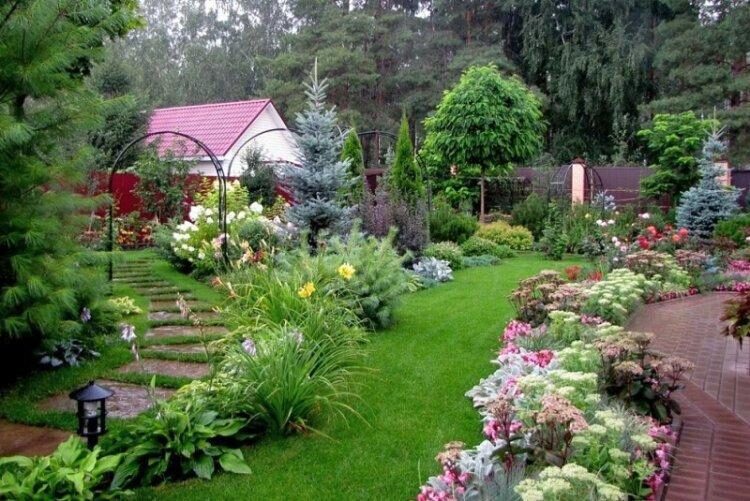
If your priority is harvesting, then at least two-thirds of the territory should be devoted to a vegetable garden, orchard, and greenhouse. Make sure to plan a storage building for fertilizers, tools, and other supplies. As for the recreational area, consider a small gazebo or a few cozy benches under a canopy.
Of course, both options can be combined, but the more complex the project, the more thorough the planning needs to be. Analyze the soil, decide which crops you will grow, and determine their location in terms of sunlight and shade. You can also plant beautiful decorative beds around fruit and berry trees. Be sure to plan a watering system that can be combined with a fountain or artificial pond.
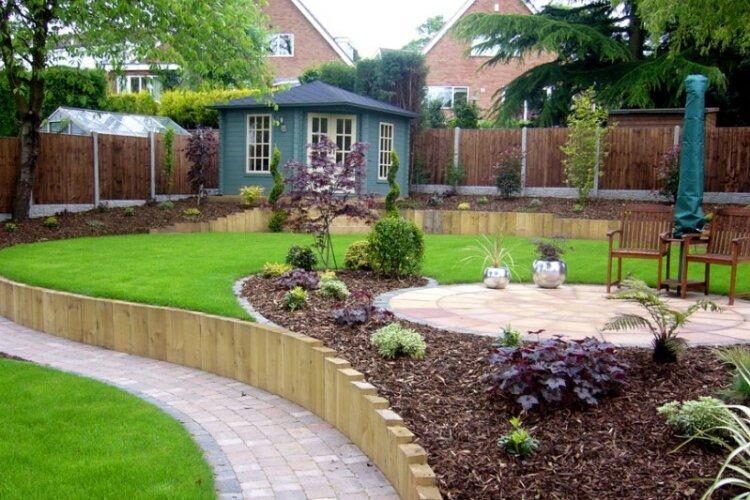
Landscaping Styles
As with interiors, to make landscaping look neat and harmonious, it is important to consider its style. It’s best to stick to one style throughout the entire area. Let’s look at some popular styles!
Modern and Minimalism
Minimalist landscapes are as simple as possible, and their simplicity is compensated for by expressive geometry and asymmetry. Natural stone, metal, concrete and other smooth textures are used in the design. The main color of the plantings is green, but bright flowering elements are used for contrast. Modern LED lights and strips are good for lighting.
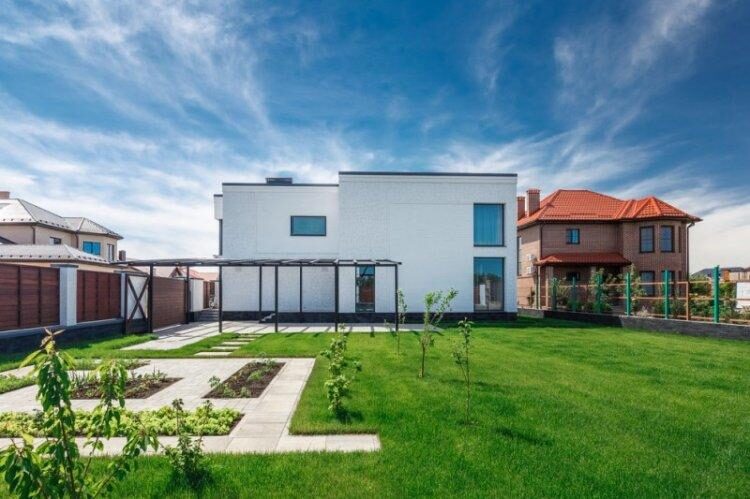
Classical style
Classicism in landscape design is a celebration of strict order, absolute symmetry, and pronounced centers. Symmetrical labyrinths of green hedges around a fountain, precisely opposite the entrance – that’s where it all comes from. The paths are straight and structured, all flower beds and borders are of strict geometric shape. Choose shrubs and trees with compact crowns that can be trimmed and shaped for planting.
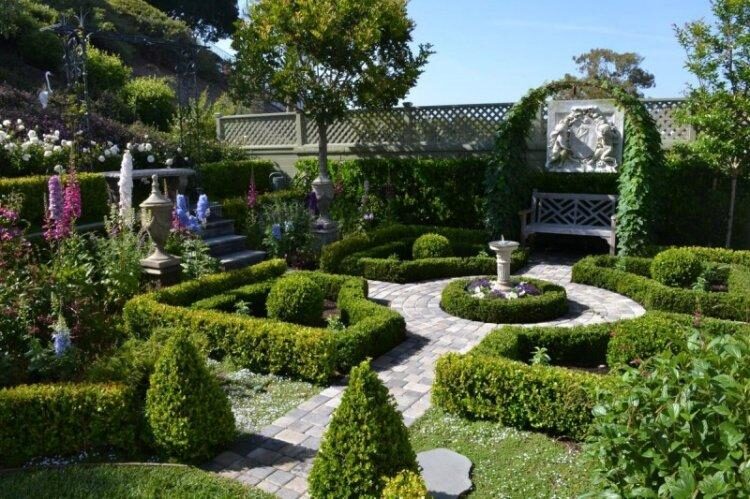
Country style
This is the choice of all lovers of home warmth and coziness in the countryside, and at the same time one of the simplest and unpretentious styles. Country landscapes are characterized by simple forms and materials, dense floral plantings, and wooden and wrought iron elements. Gazebos and canopies made of intentionally rough-hewn logs are hidden behind bushes and tree canopies. In this type of landscape design, vegetable gardens, fruit orchards, and annual flowerbeds fit in very naturally.
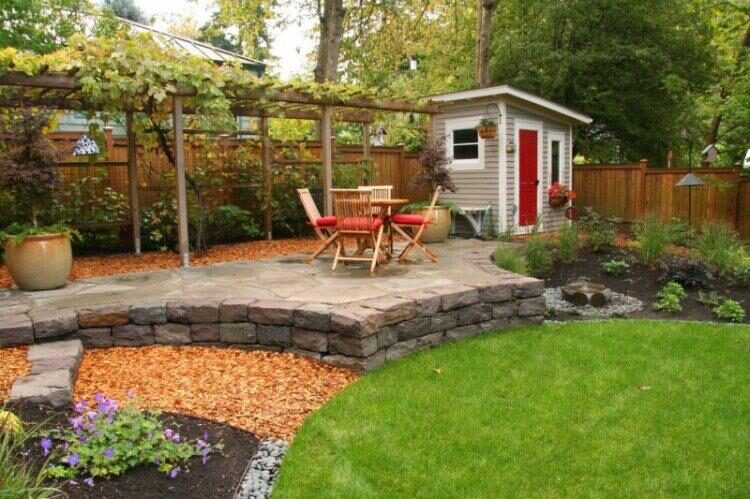
Alpine Style
If you have a site with slopes, don’t rush to flatten it by all possible means – this is the perfect base for an alpine style. In addition to being very picturesque, it is also undemanding because unpretentious perennials are used for planting. The design uses a lot of stone: paths, fences, flower beds, streams and bridges, supports, embankments, and other structures.
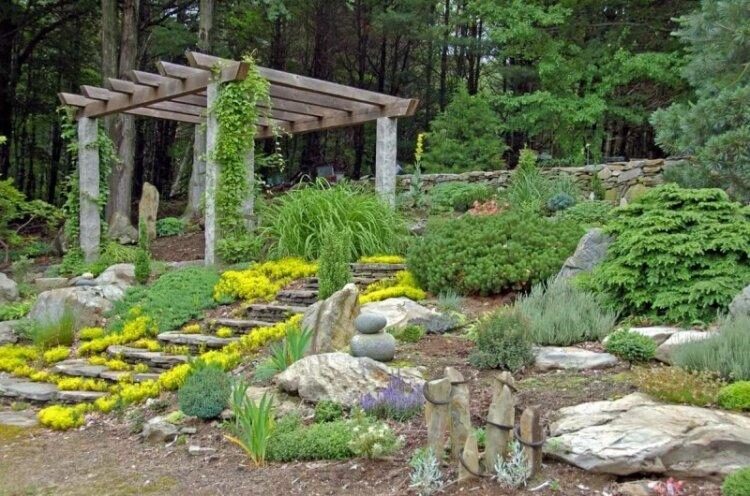
Japanese and Chinese styles
The main elements of an Eastern garden include flowering deciduous trees, evergreens, flowers, moss, stones, pebbles, sand, and streams of water. It feels as though a view of an ancient castle is about to open up.
While the Japanese style is more coherent, the Chinese style leans towards abrupt changes in the landscape. A new zone is visible from every angle: a stone garden, tall bamboo, a pagoda gazebo, carved dragons, and decorative flowerbeds. There is no room for symmetry, strict orderliness, or obvious logic of a classic style.
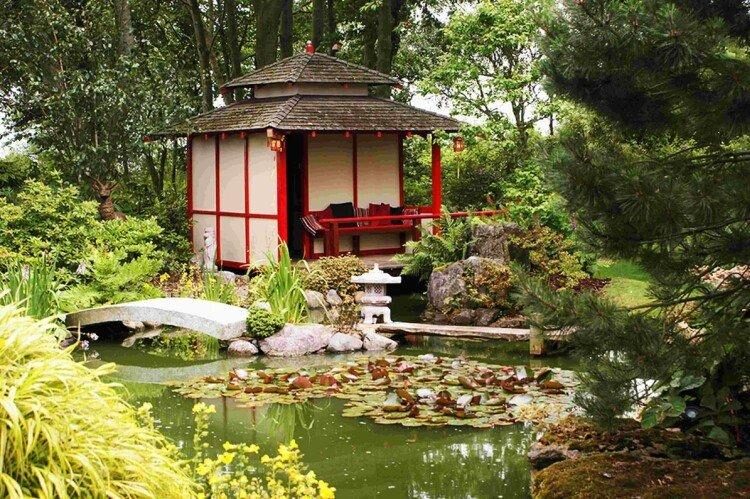
How to visually enlarge the area of the site?
To beautifully and functionally arrange a small site, adhere to the main rule – say no to gigantism. Say no to large buildings, and distribute those that already exist throughout the territory, alternating them with areas for relaxation and masking them with shrubs. Don’t chase after the quantity of plantings – it’s better to carefully consider how they will blend together.
Avoid trees with massive root systems and those that will eventually grow to the size of a house. Limit yourself to a group of neat, low-growing fruit varieties. And certainly don’t surround the site with a high, solid fence – it will make it feel cramped and gloomy, rather than cozy.
To visually enlarge the space, use smooth and rounded shapes without sharp or aggressive geometry. For example, if there is a pathway, make it meander between flower beds and shrubs. Lighten up the darkest and most remote corners with white or yellow flowers.
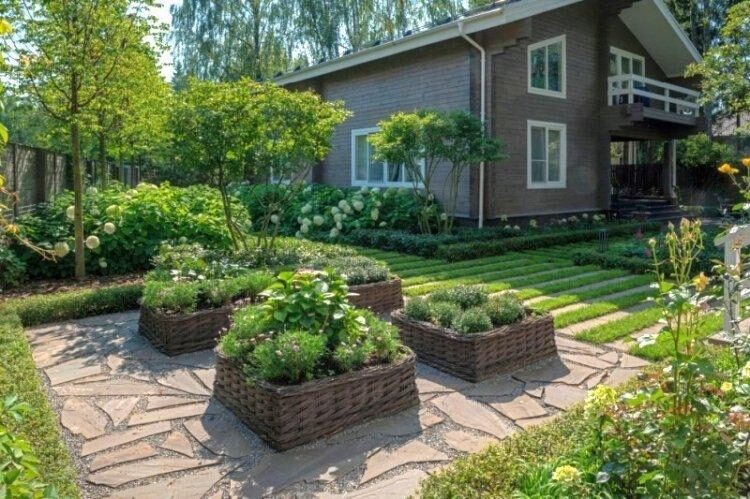
Landscaping ideas and photos for a country plot
Making your plot unique can be done in so many different ways, as even the simplest flowerbed can be arranged in a hundred different ways. If you’re lacking inspiration, don’t worry – we’ve put together a large collection of photos to help get your creative juices flowing!
Lawns and flowerbeds
A beautiful and well-kept lawn can be achieved in the first year, while well-chosen flowers for flowerbeds can bring joy from early spring until the first frost. You can create both solid, variegated carpets and flowering decorative hedges.
If you don’t like constantly tending to flowerbeds, go for low-maintenance perennial plants. To add more colors and variety to your landscaping, consider planting colorful annual varieties. In addition to traditional flowerbeds, you can create borders, frame your lawns with flowers, or create complex, multi-level mixed borders.
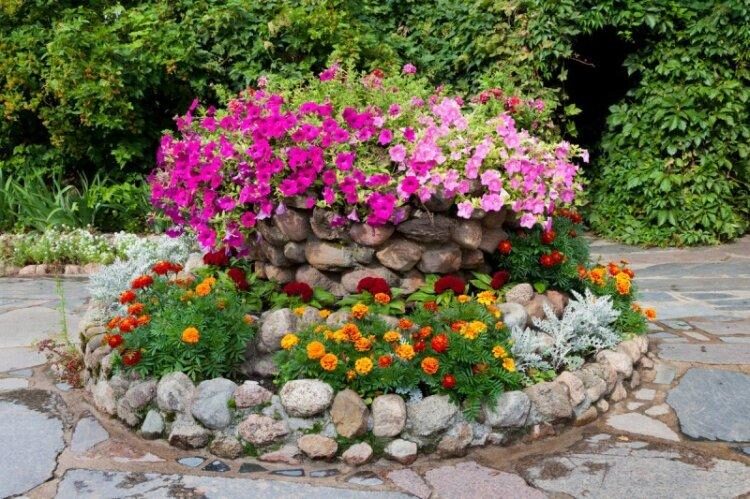
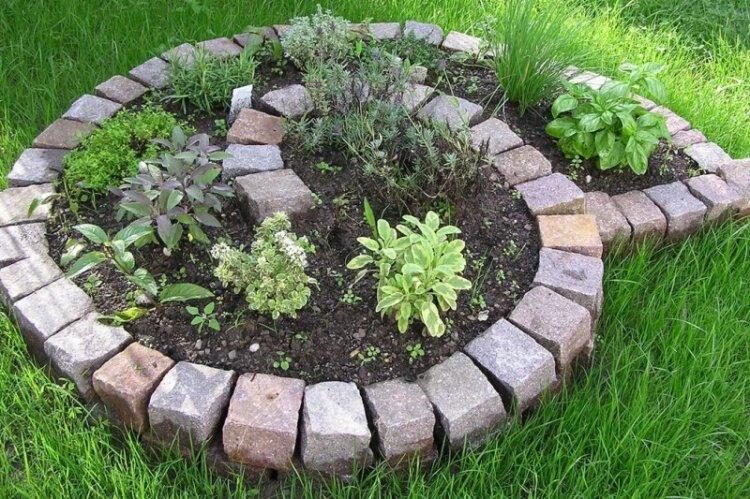
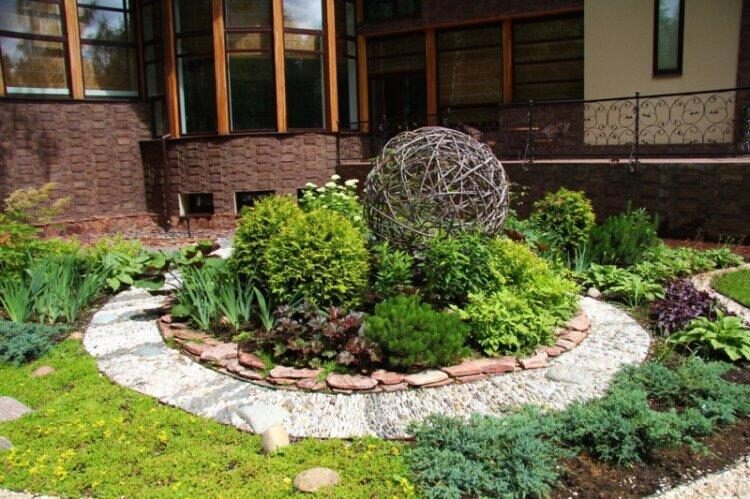
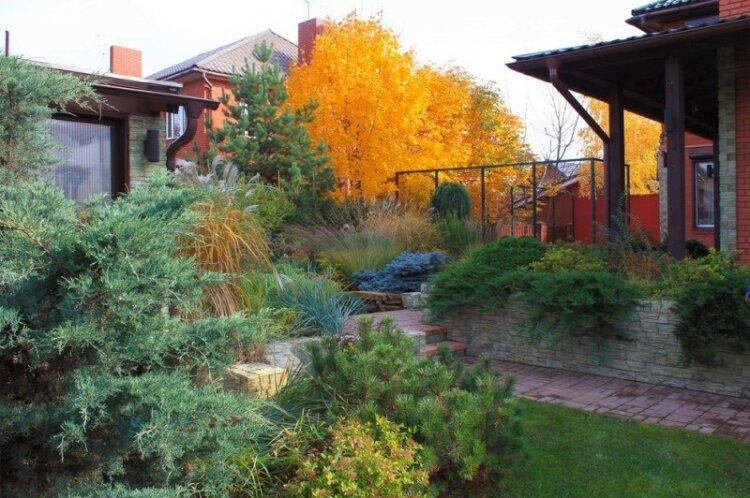
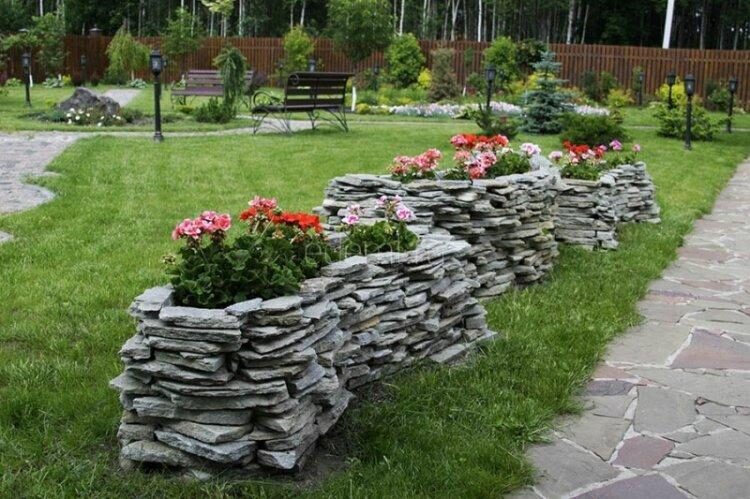
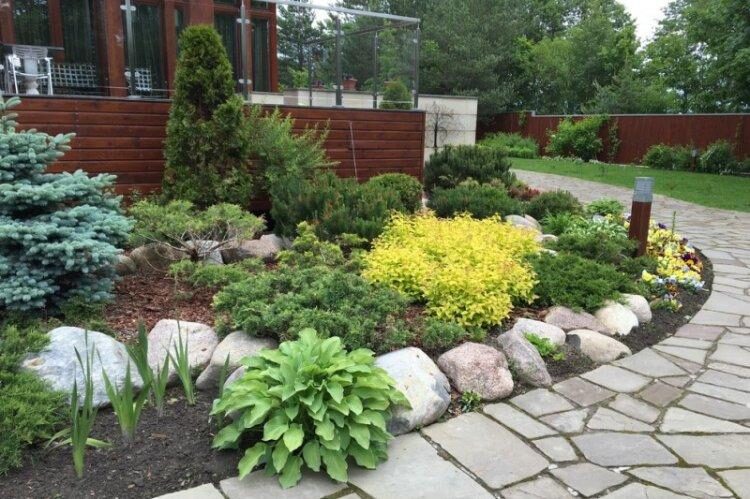
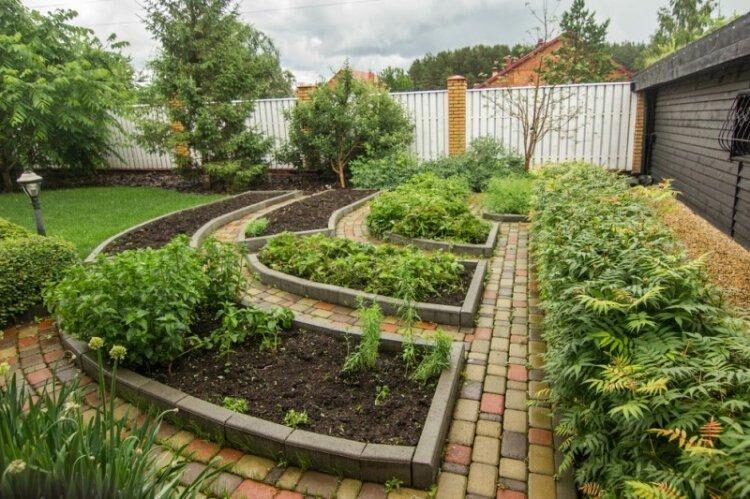
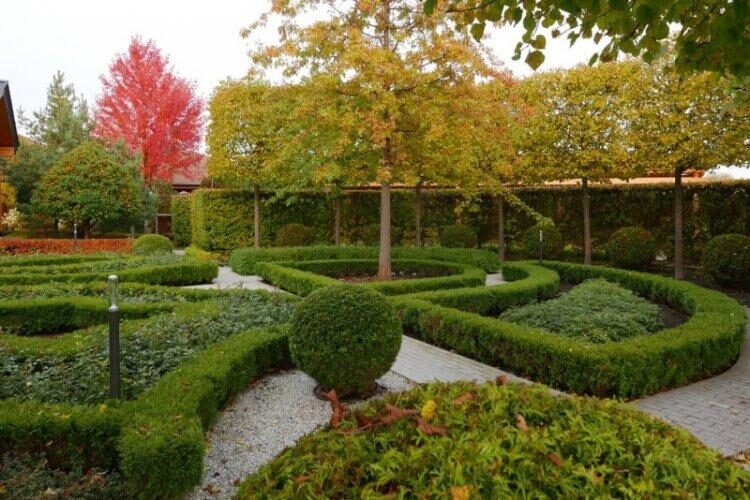
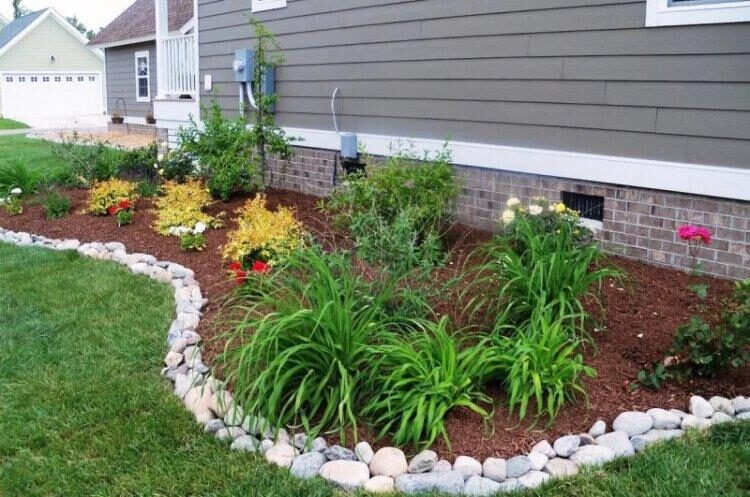

Garden paths
To make it easy to walk around the plot in both rainy autumn and snowy winter, it’s a good idea to plan garden paths in advance. There are many different ways to design them – using concrete, stone, wood, paving stones, ceramic tiles, or any other materials.

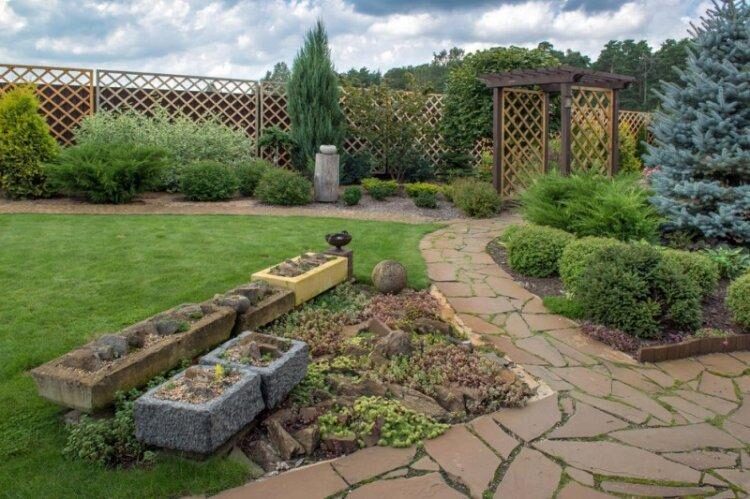
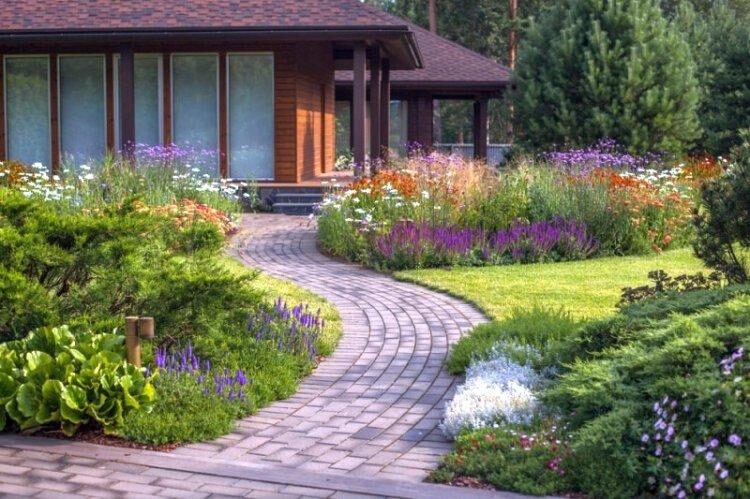
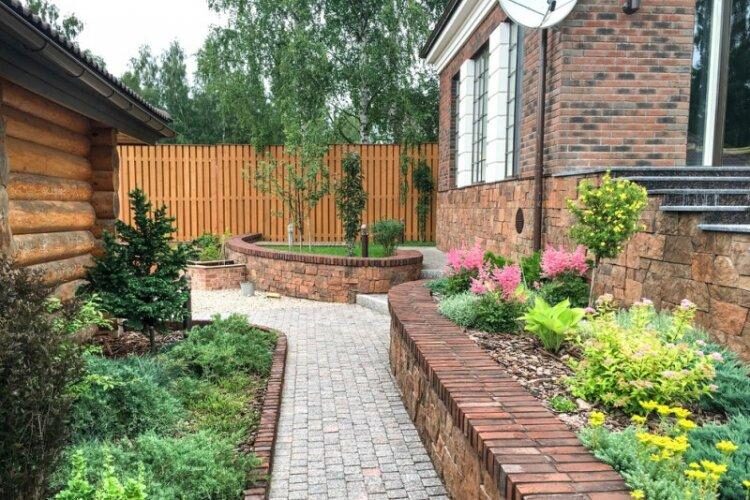
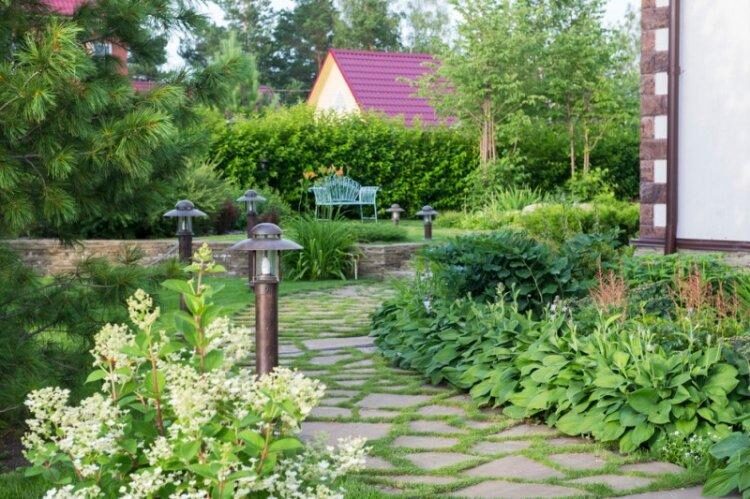
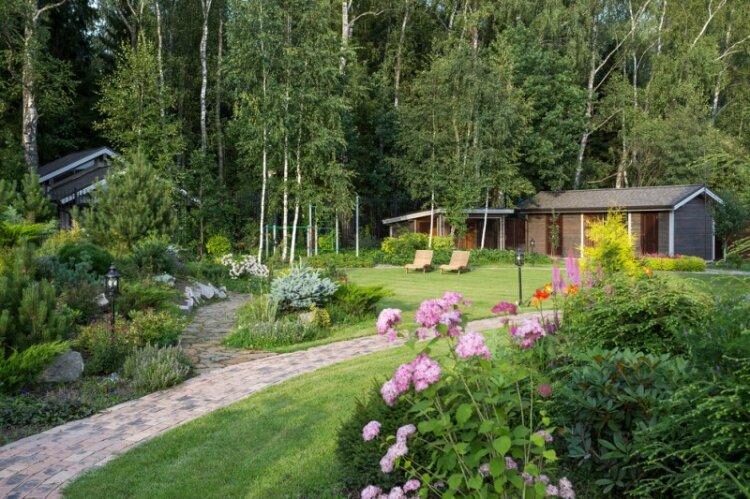
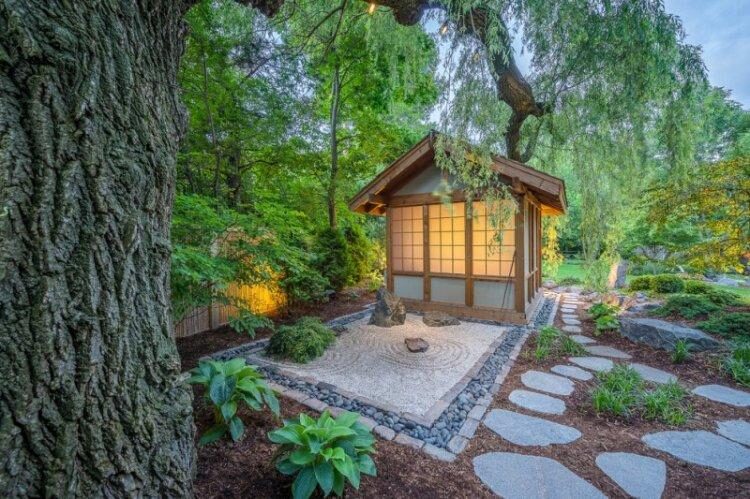
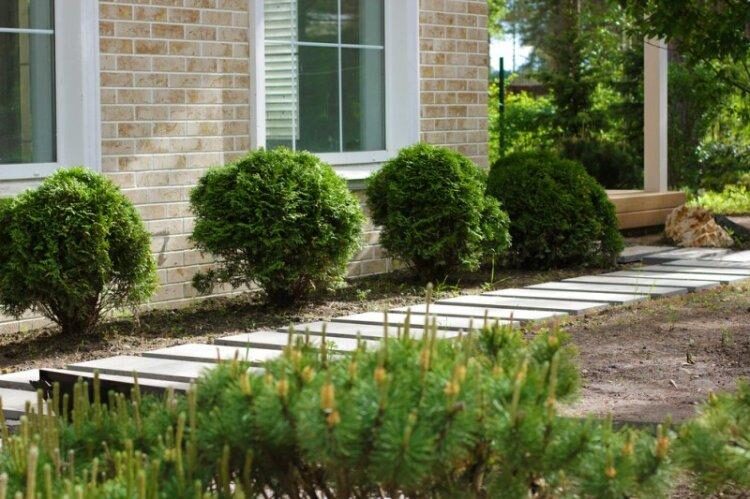
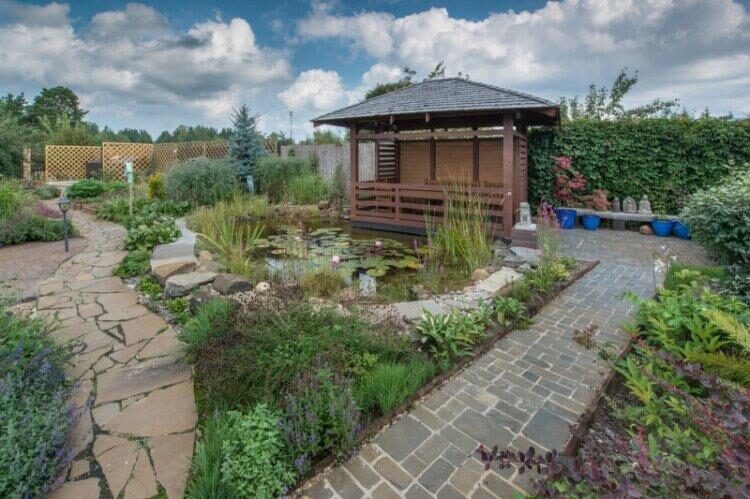
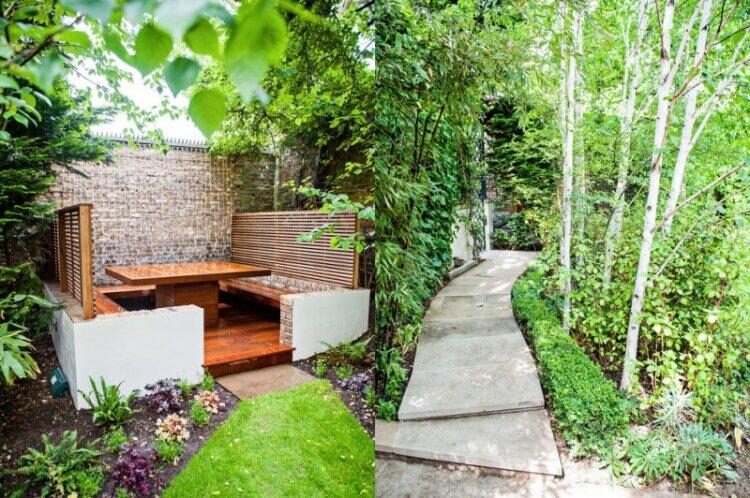
Water features and fountains
Water on the plot creates coolness and freshness, saving you from the hottest summer heat. A plot with a small pond or decorative fountain is instantly transformed. Just don’t forget about good waterproofing and drainage systems to avoid waterlogging the area.
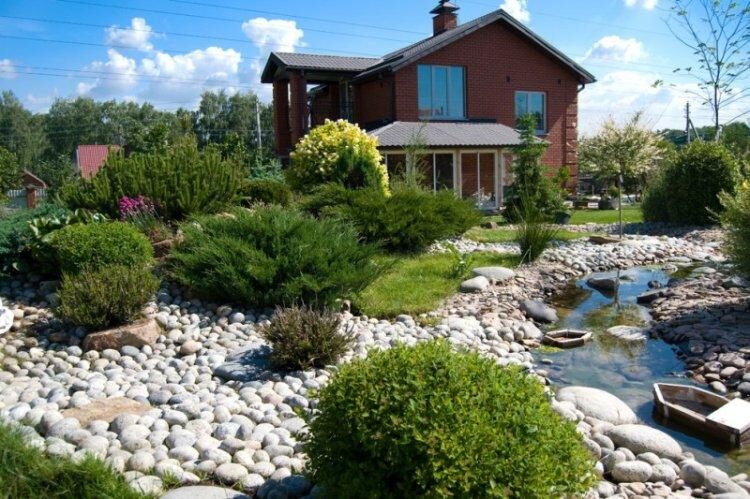
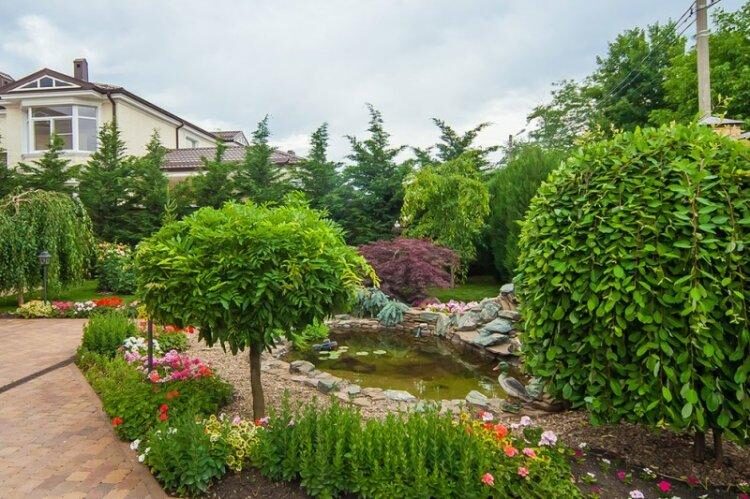
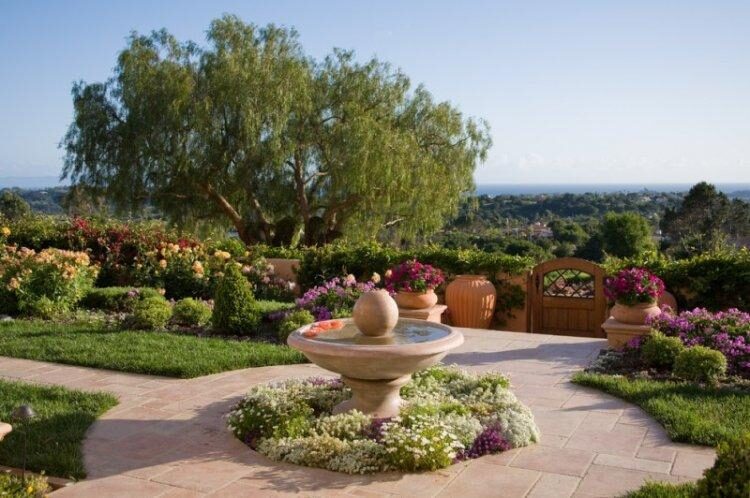
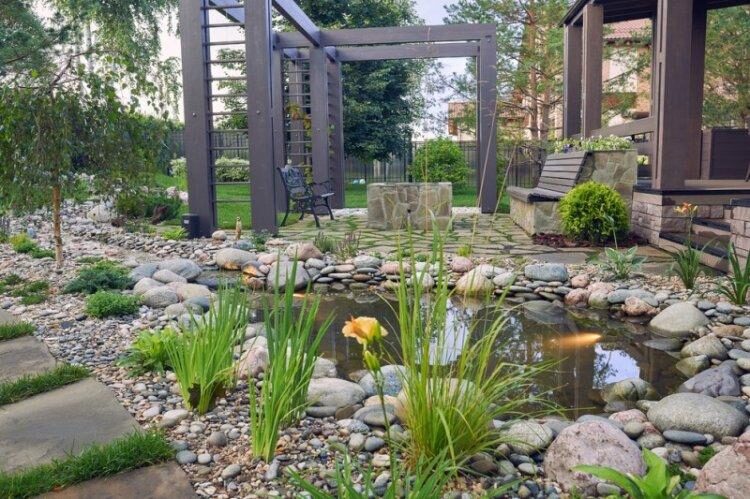
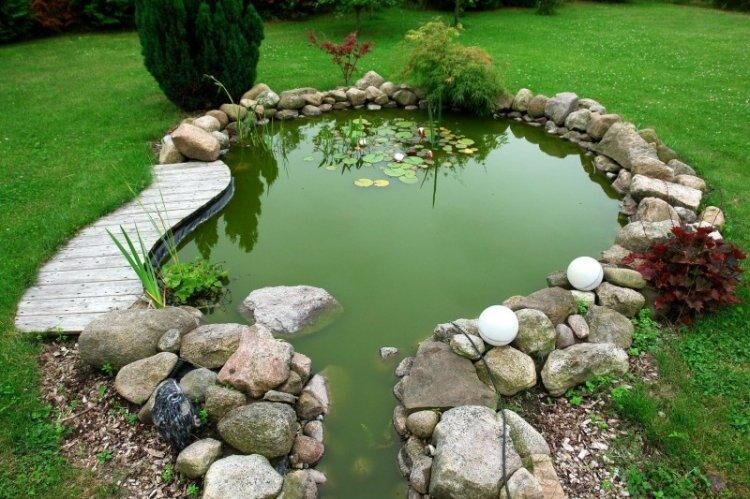
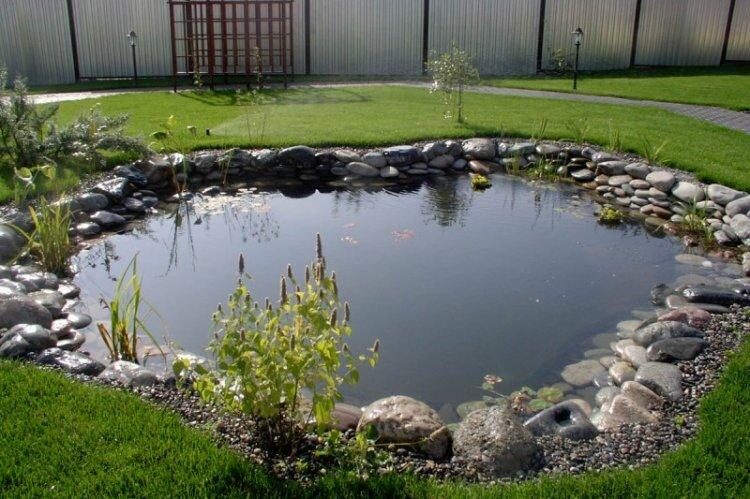
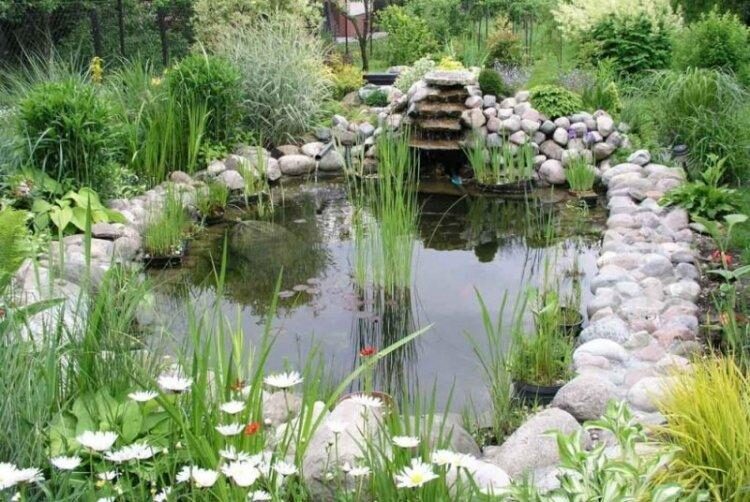
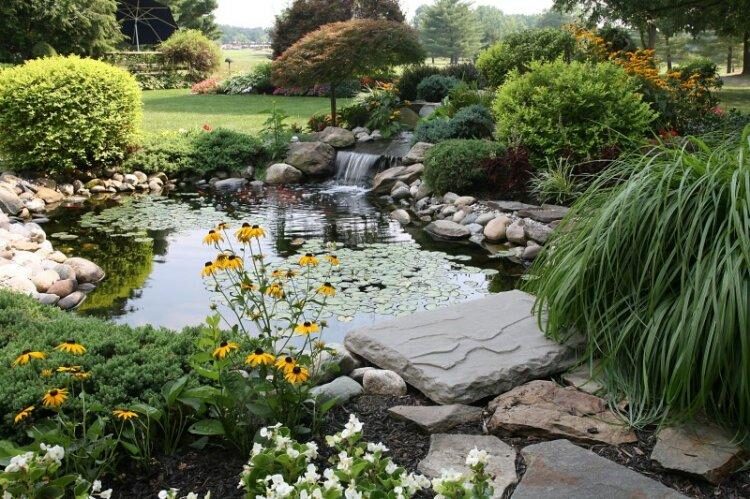
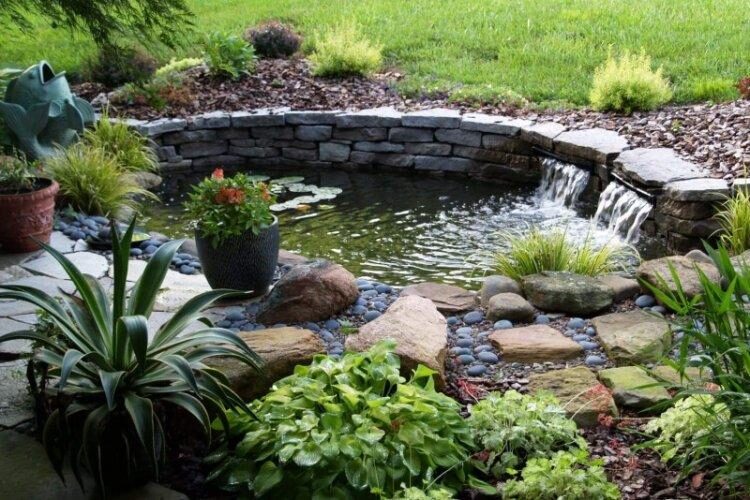
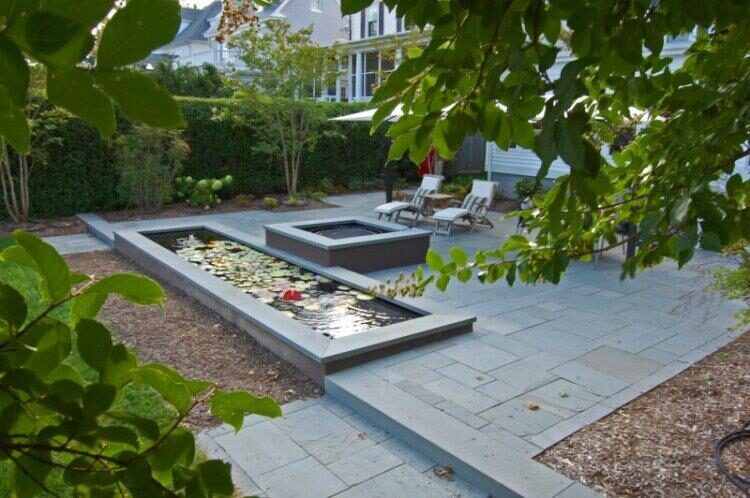
Fencing
The fence is not necessarily an insurmountable high monolith around the entire plot. Small neat wrought iron or wooden fences are good for flower beds and vegetable gardens, for zoning the site, arranging gazebos or porches. And from green hedges, real labyrinths are built, similar to those that used to surround only luxurious palaces.
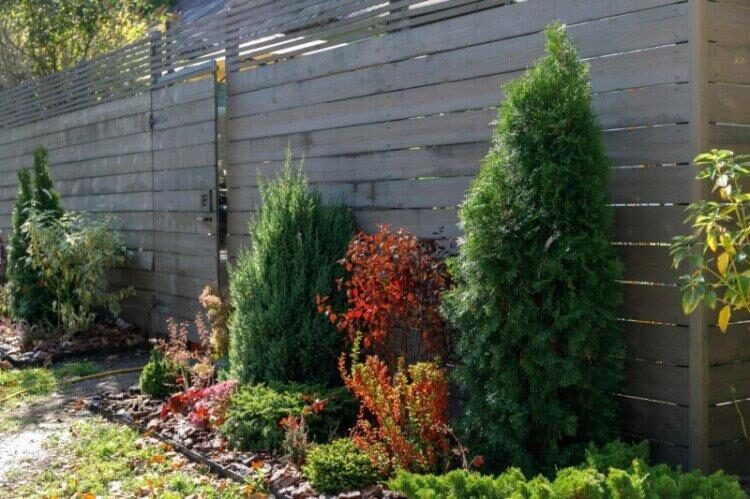
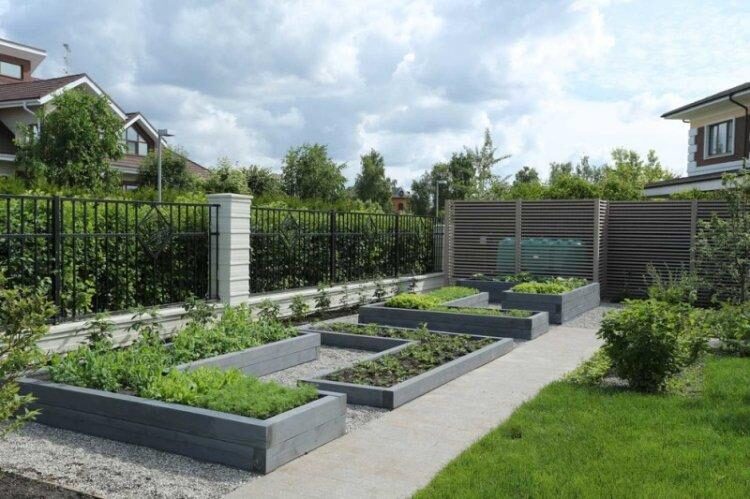
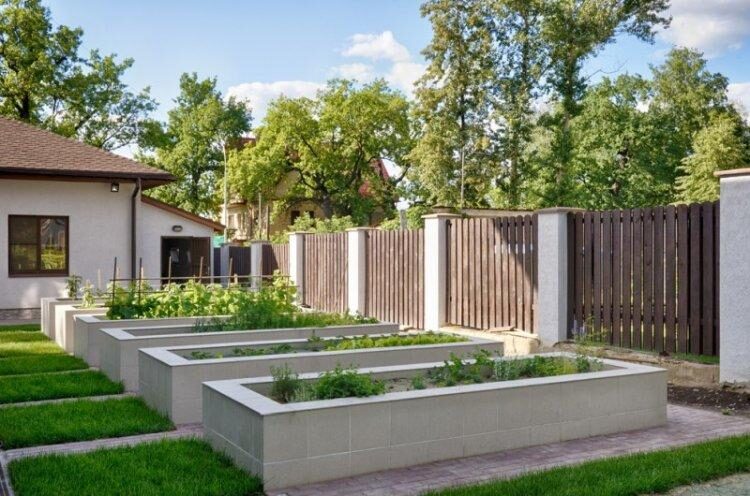
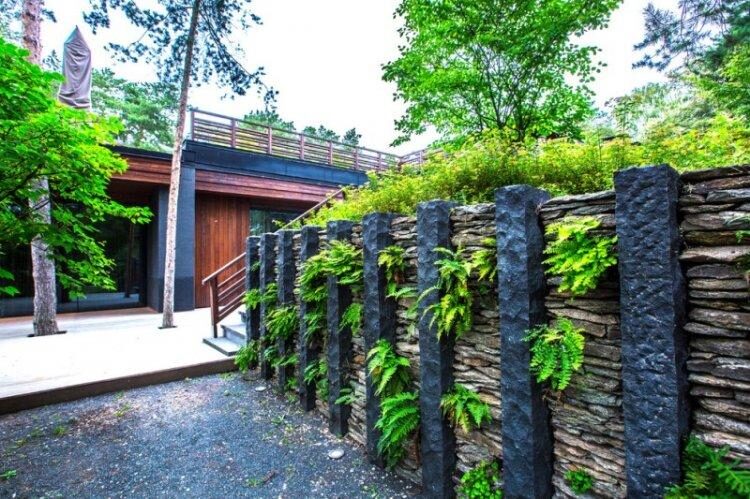
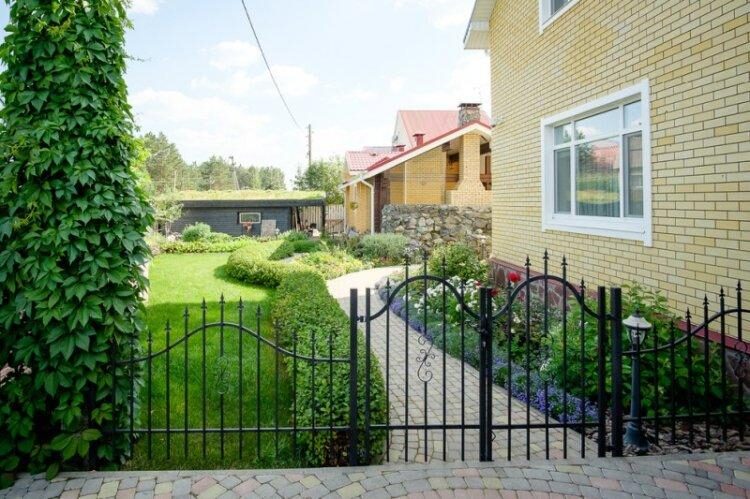
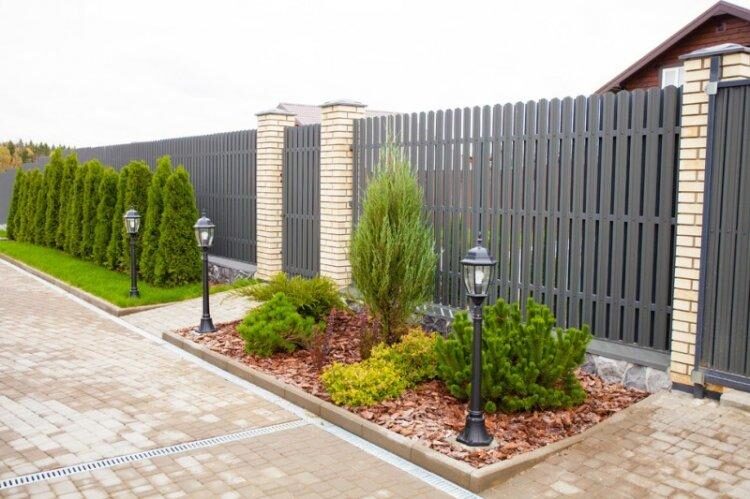
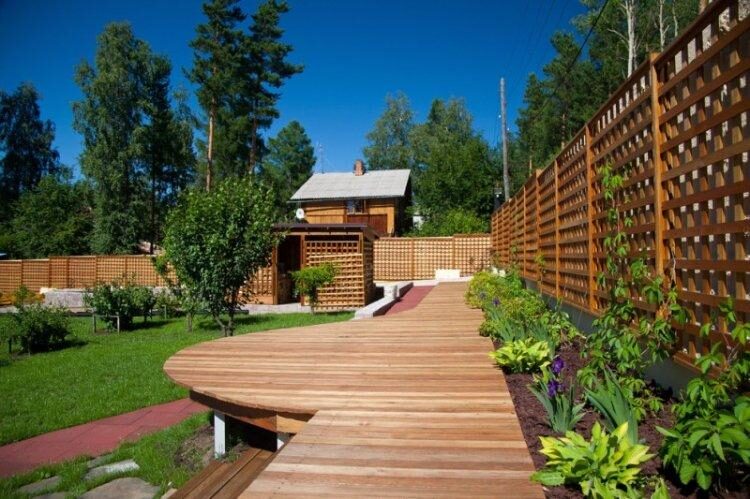

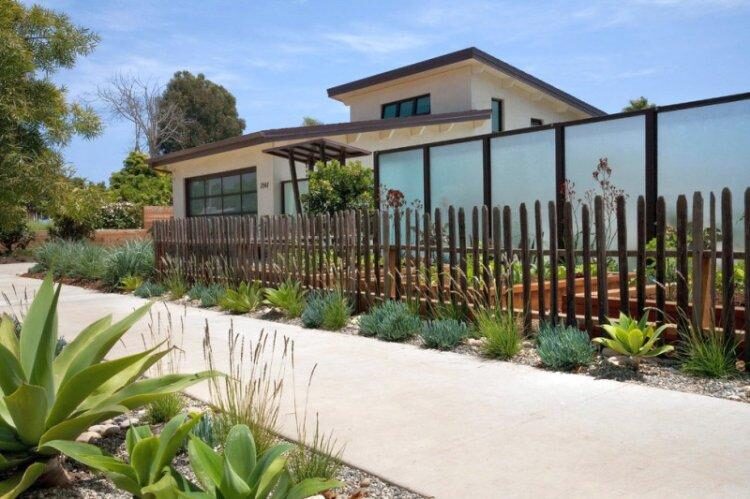
Garden gazebos
To hide from the scorching sun or rain, read a favorite book in the fresh air, or have a mini-picnic in any weather, a simple gazebo will help. Its advantage is that it is a solid structure and does not need to be stretched and removed every year like a tent. And if you want something lighter, pay attention to pergolas or green canopies covered with plants.
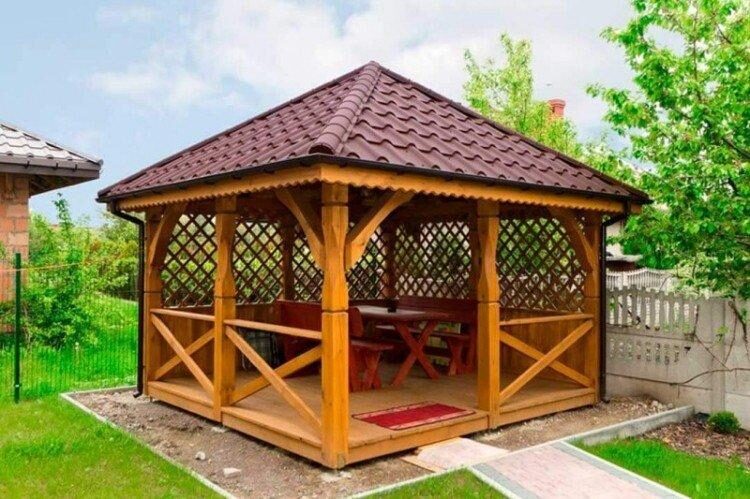

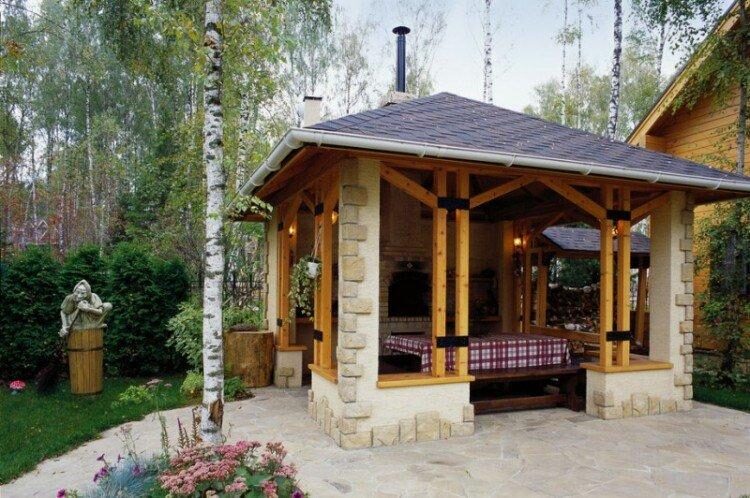
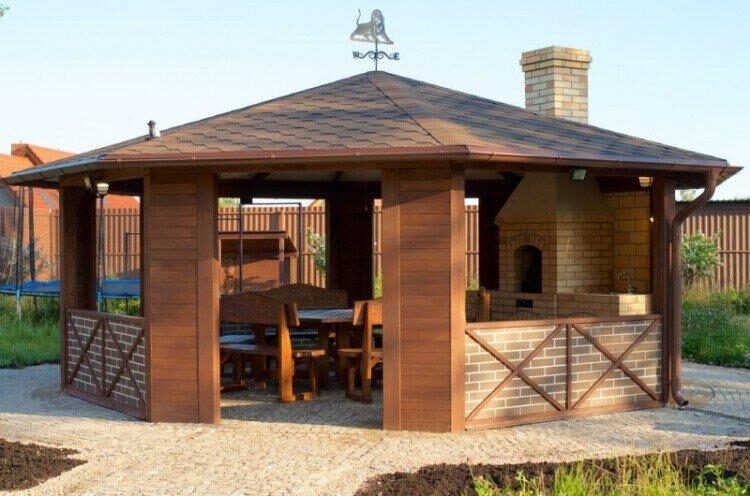
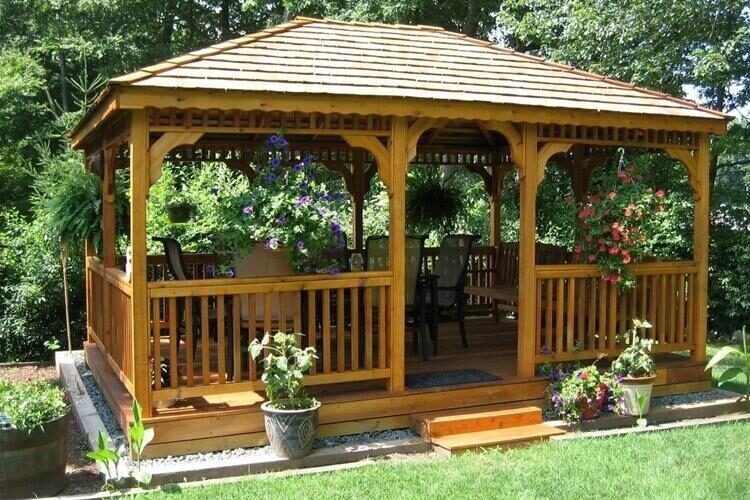

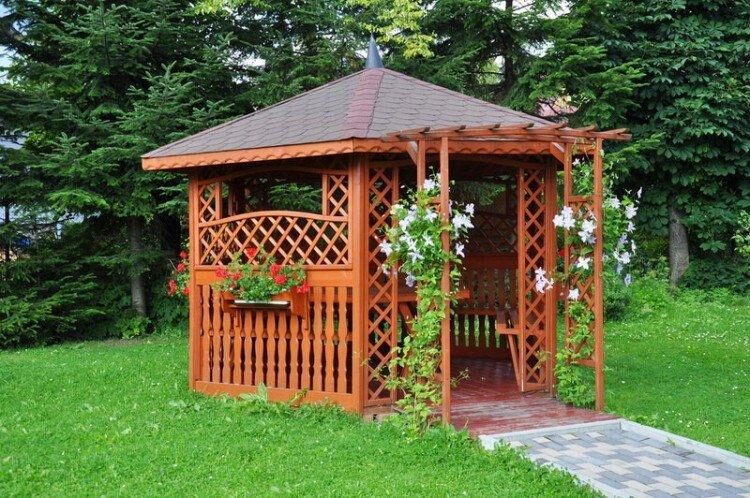
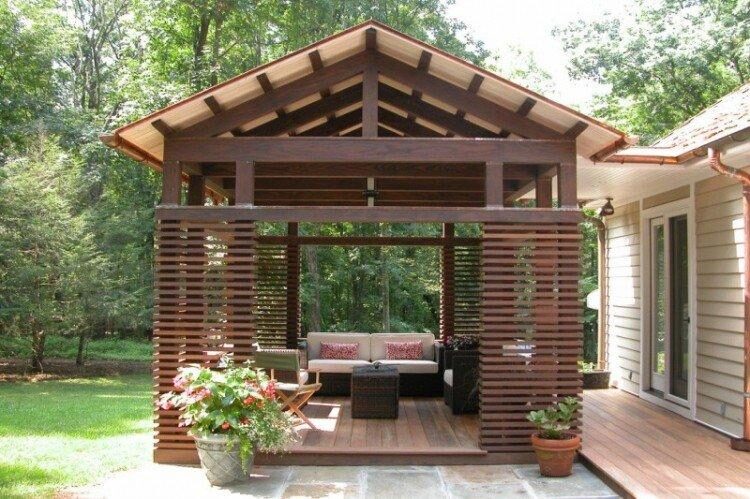

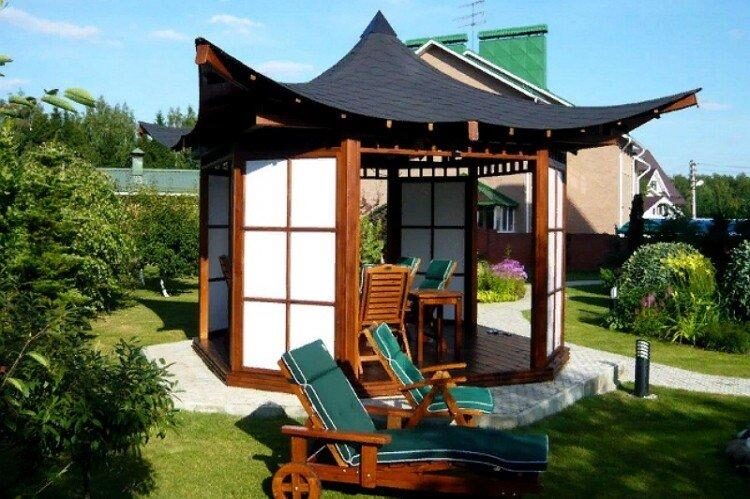
Sculptures and Figurines
Beautiful figurines in the garden always add uniqueness to it and create a special atmosphere. They can be cheerful rural gnomes or elegant Chinese dragons. You can even make these figurines yourself from available materials – and no one else will have anything quite like it!
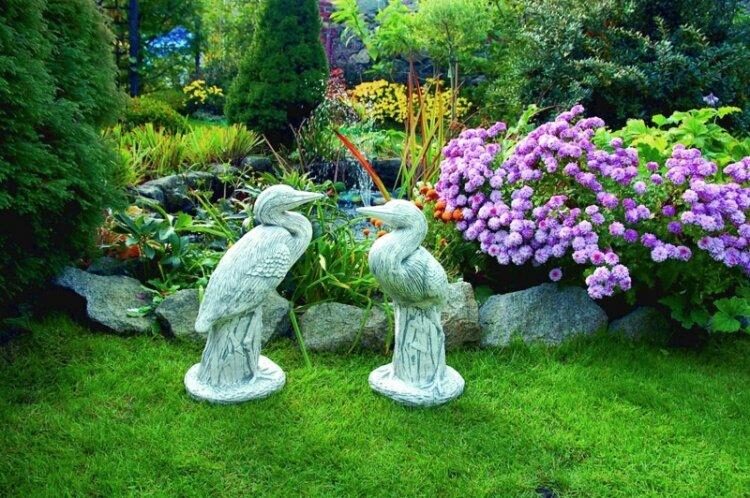
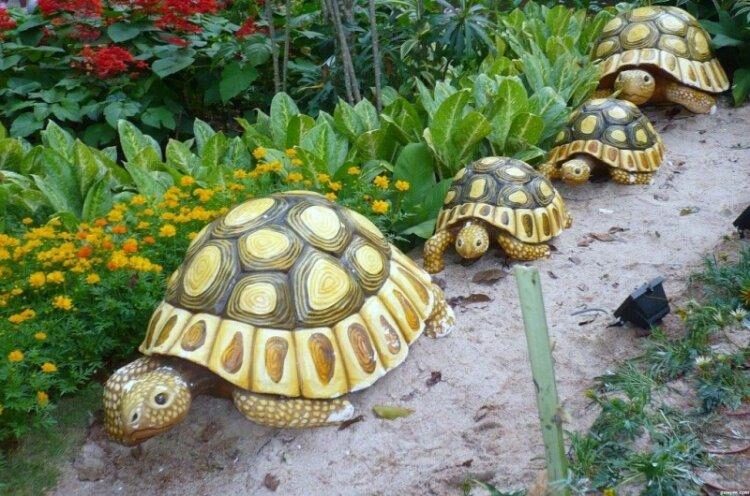
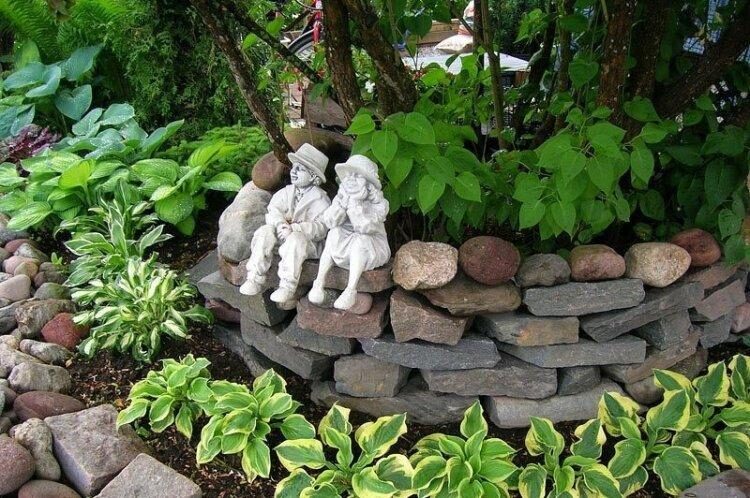
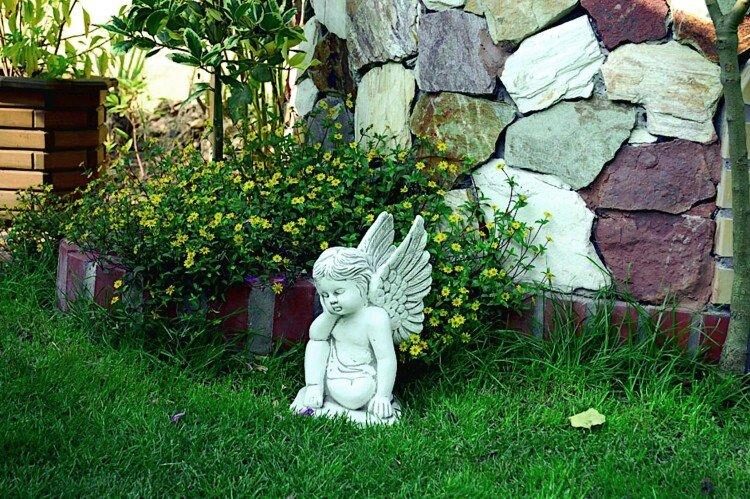
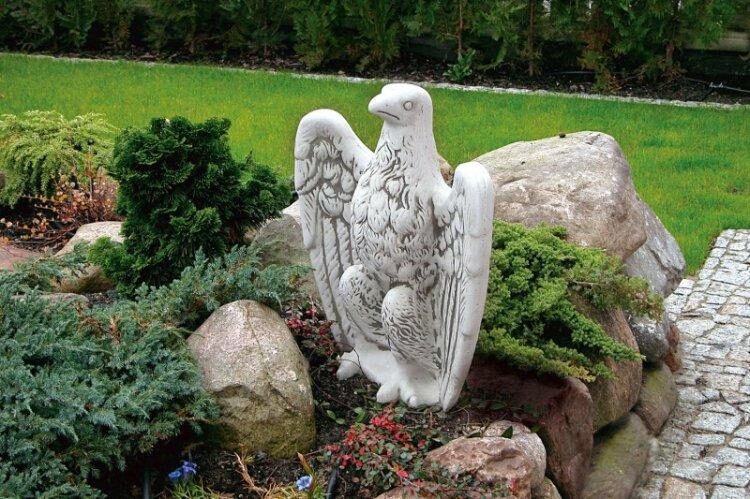
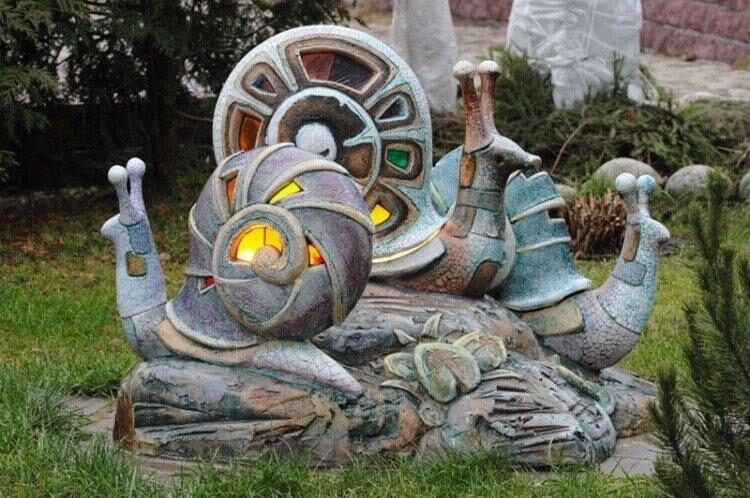
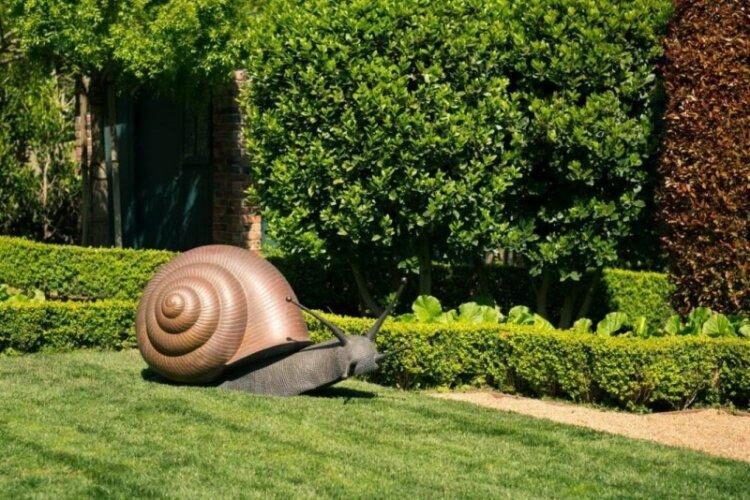
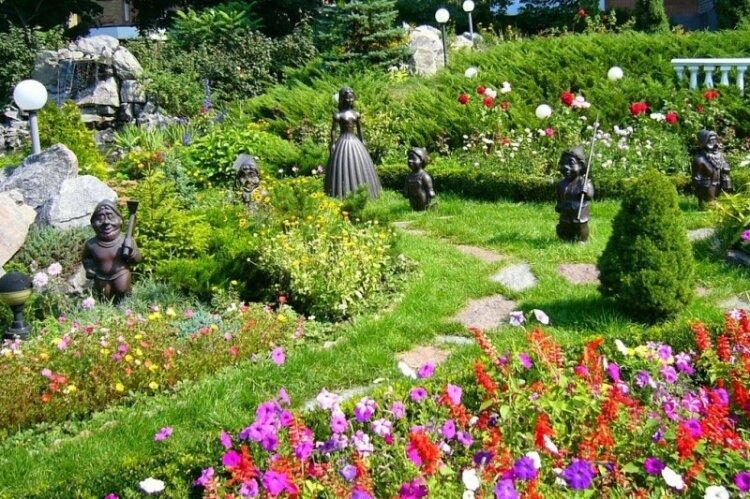


Benches and swings
If you love to relax in nature, it’s easier to create spaces for this in advance. Hide a few neat benches with backrests in the shade of the garden, hang up hammocks, and put up swings. By the way, they don’t necessarily have to be for children – there are many elegant larger models for multiple people.
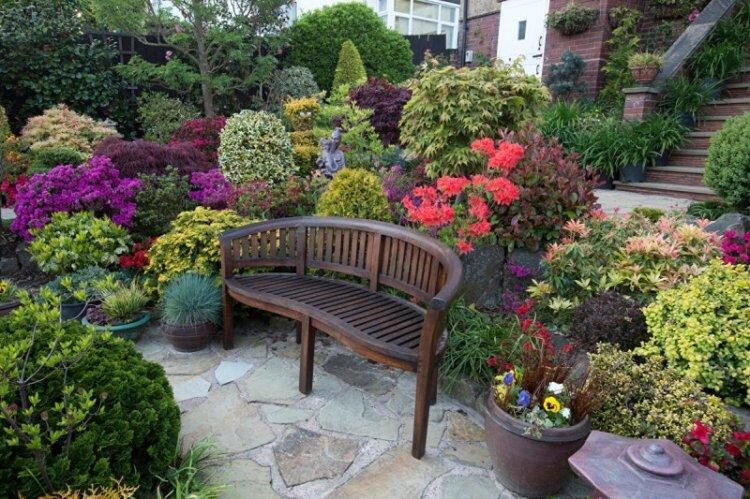
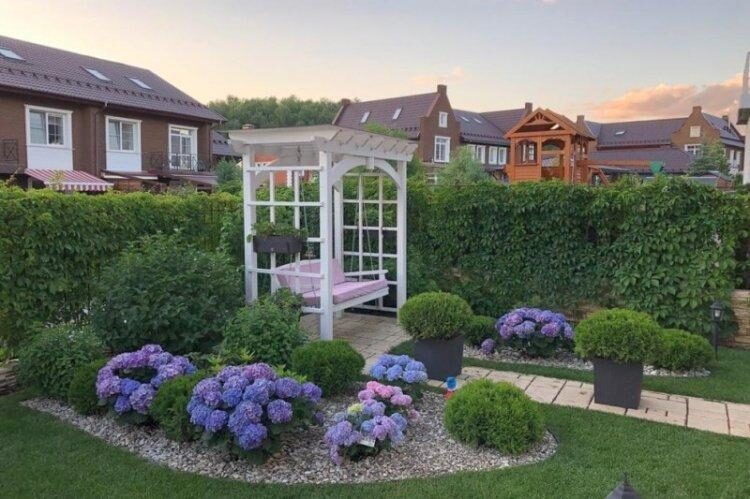
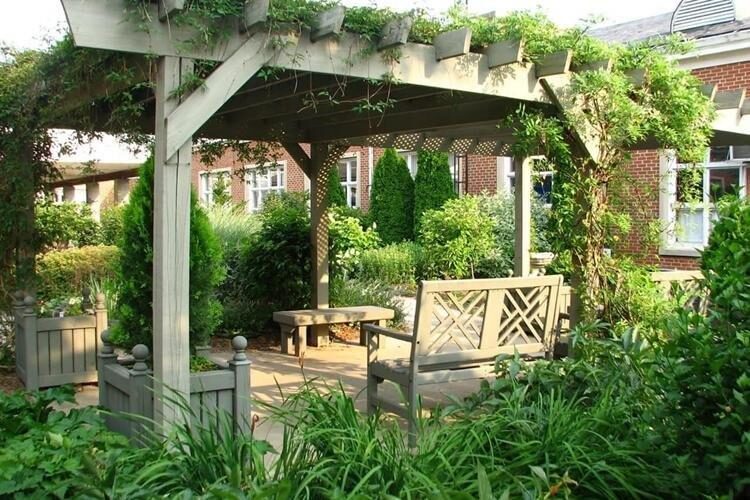
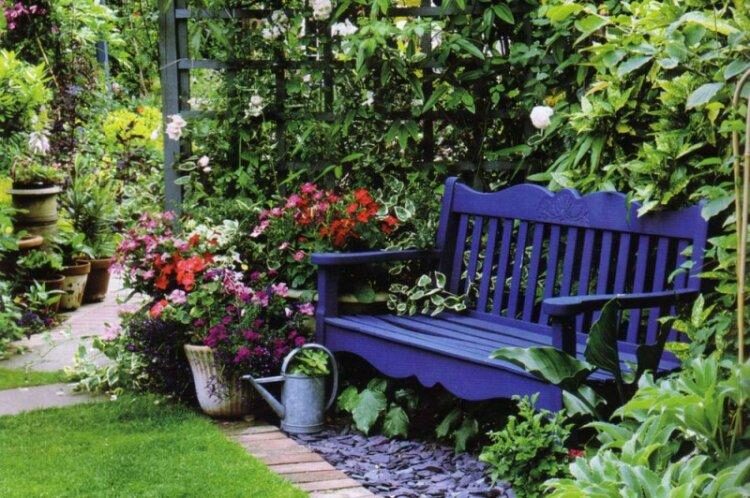
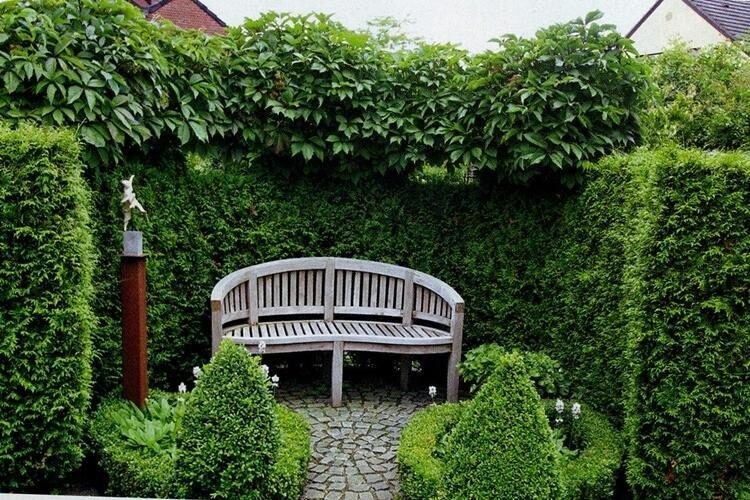
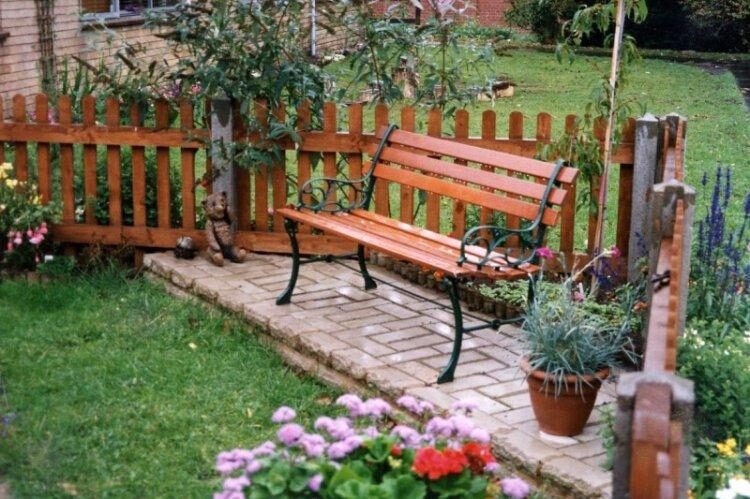
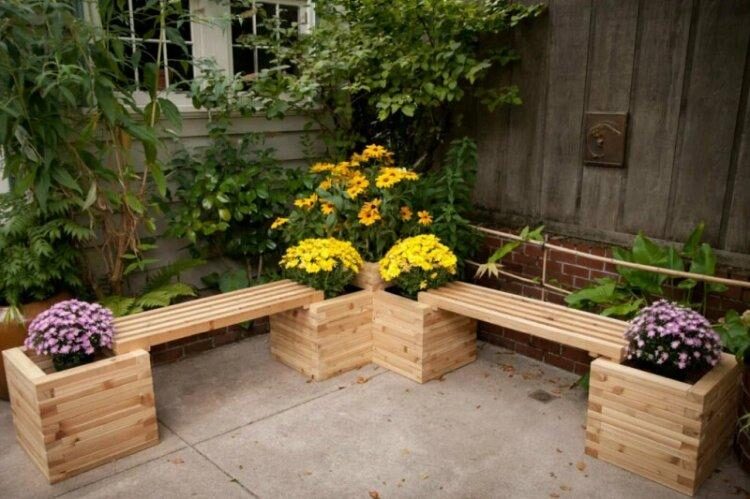
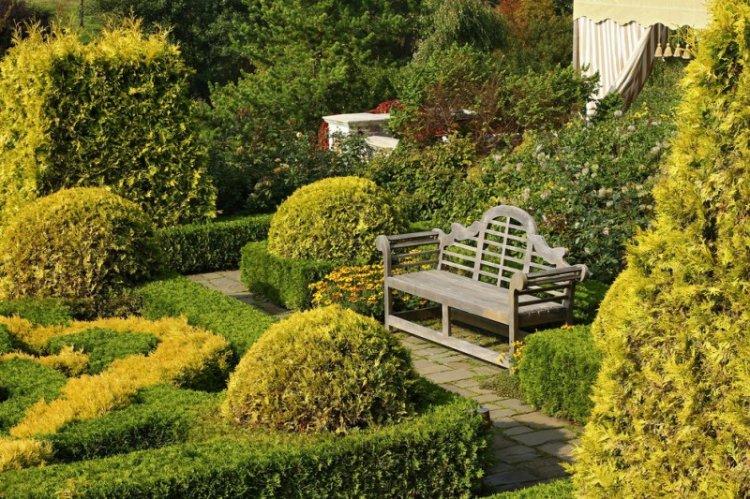
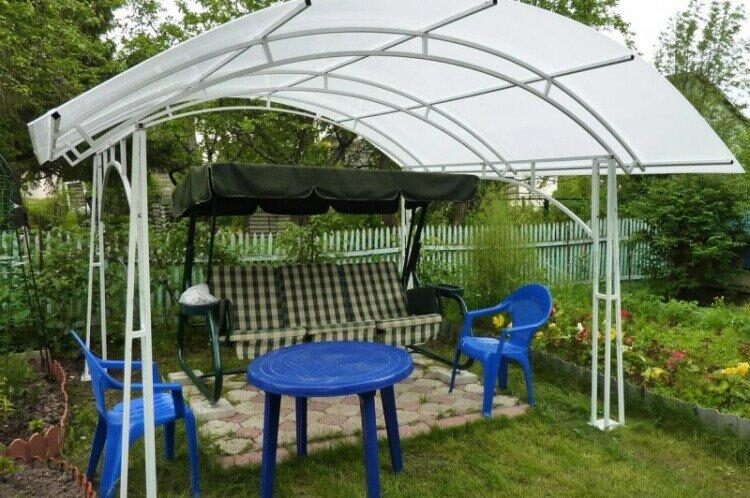
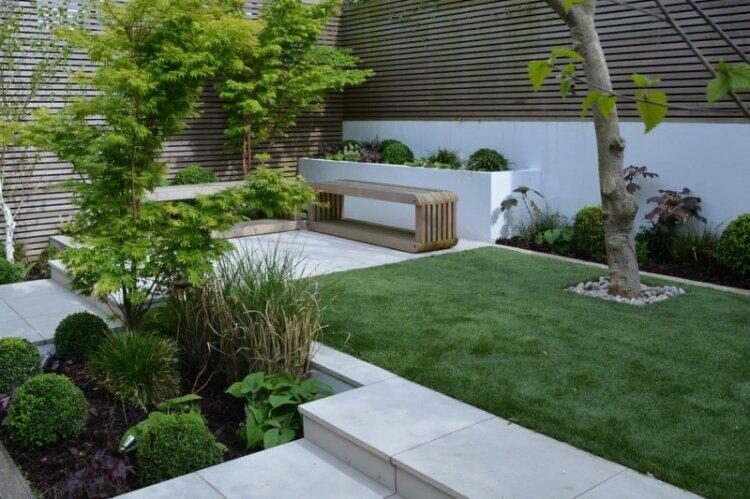
Rock gardens
Rock gardens are great when you already have real slopes on your plot. The key is to beautifully decorate them with granite, slate, limestone – most importantly, natural stones with a pronounced texture. The crevices between them are filled with a mixture of soil, sand, peat, and manure, and then randomly sprinkled with plants. A small stone waterfall made of the same material will especially complement the rocky hill.
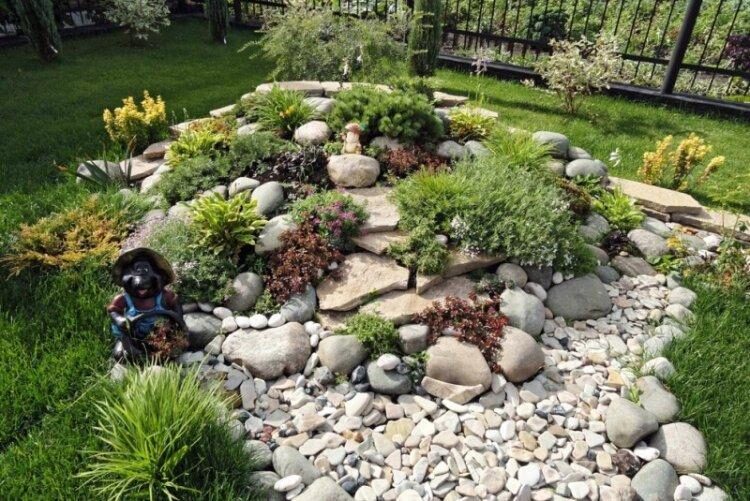
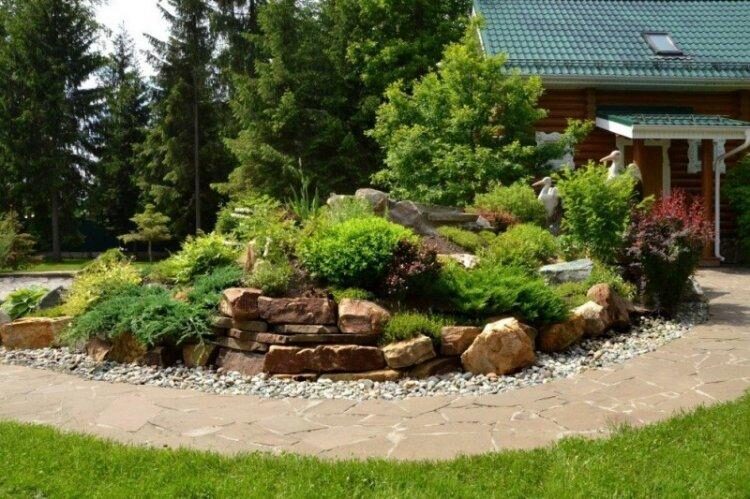
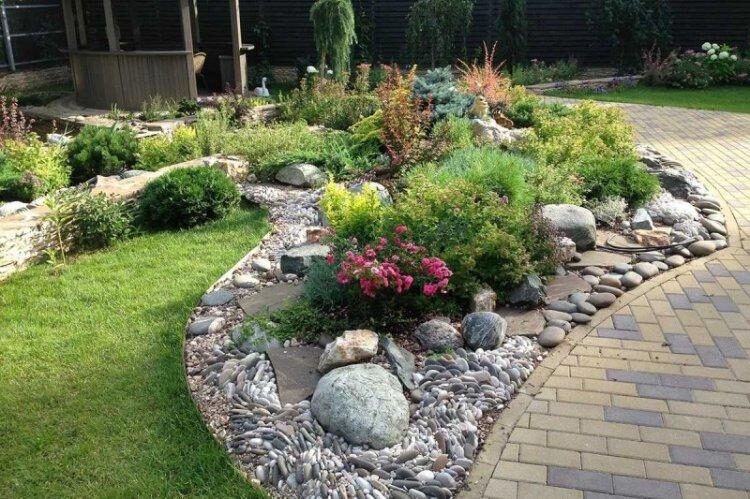
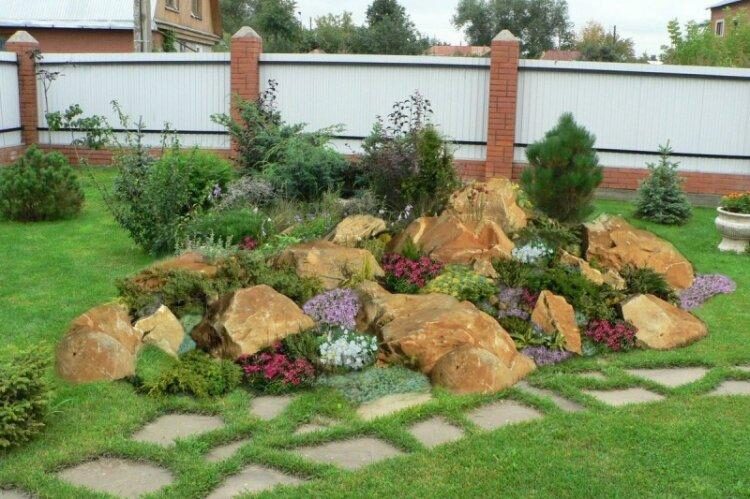
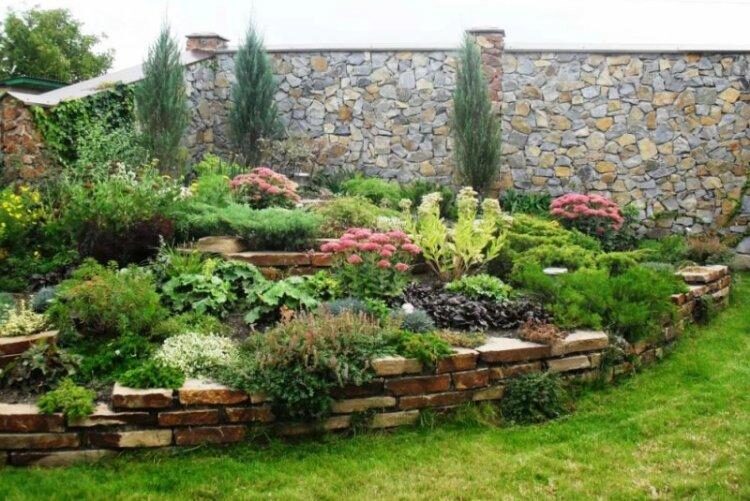
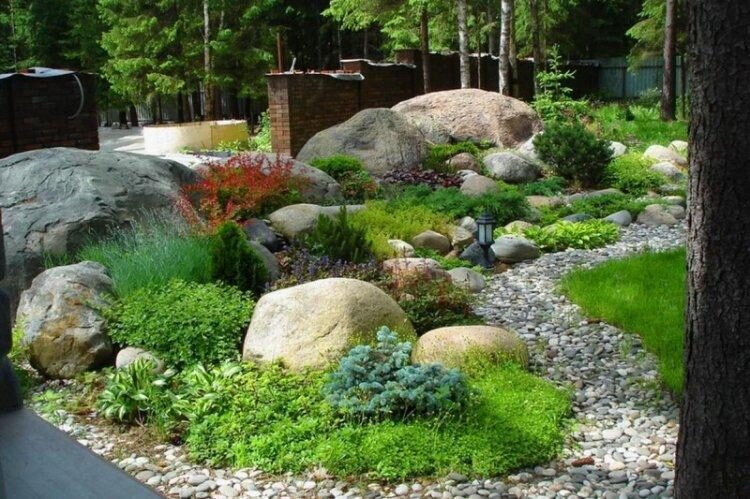
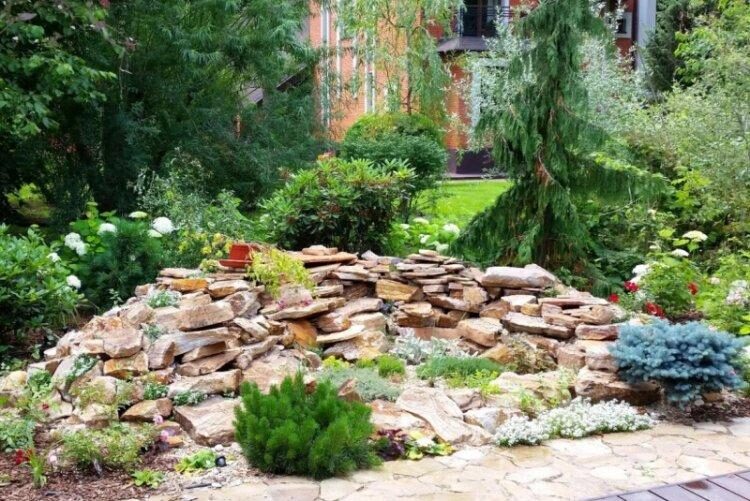
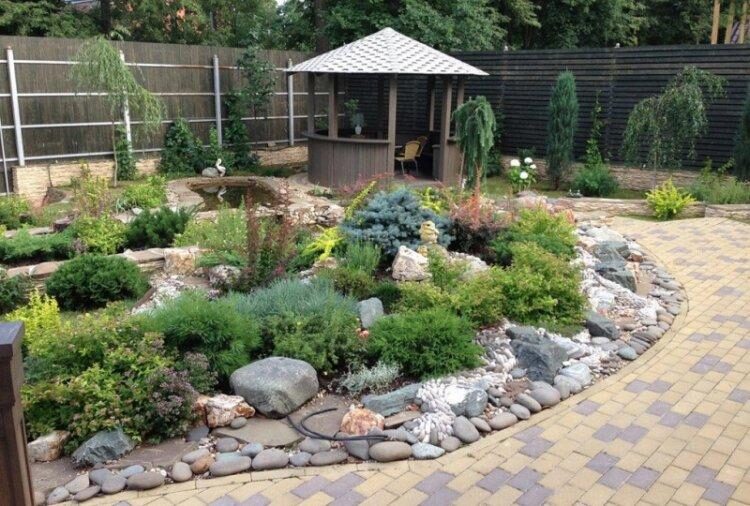
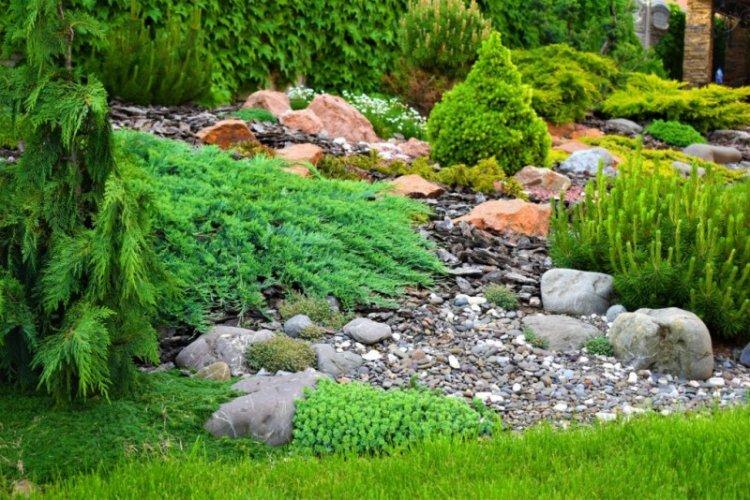
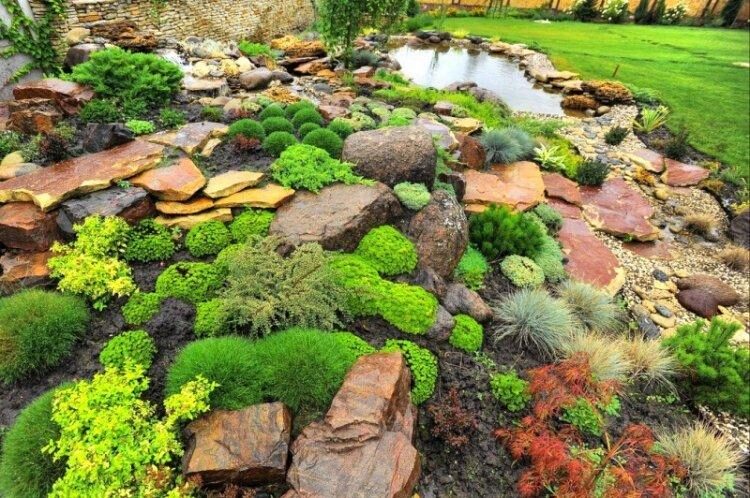
Lighting
Lighting in landscape design solves several tasks at once: aesthetics, convenience for residents, and optimal conditions for different types of plants. For example, artificial ponds require good lighting to prevent excessive blooming.

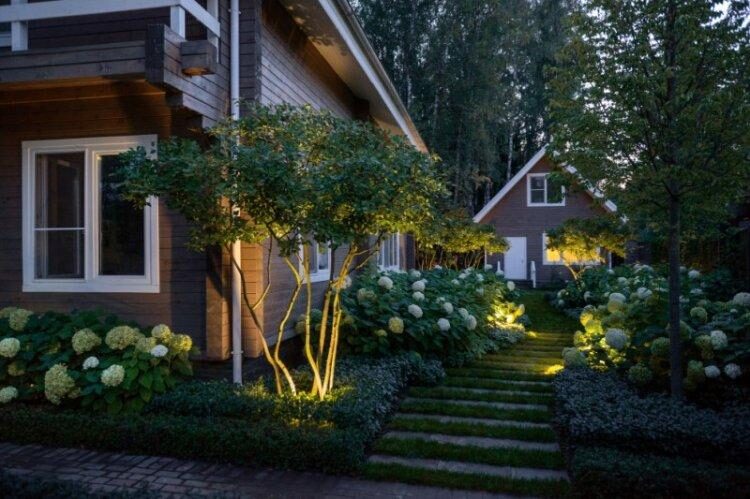
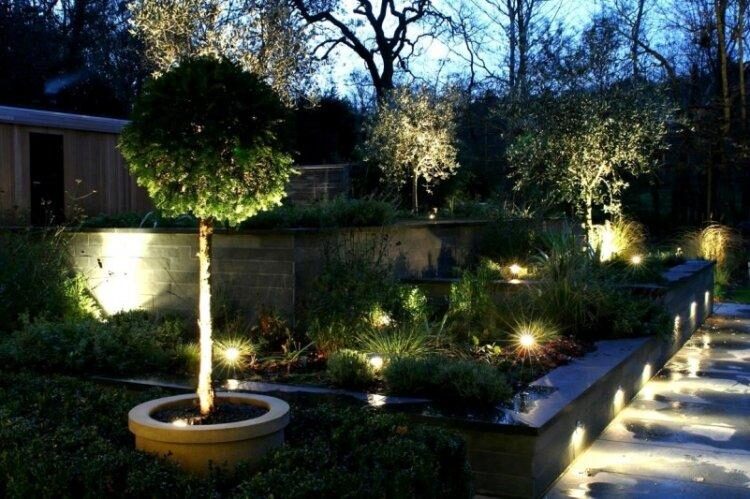
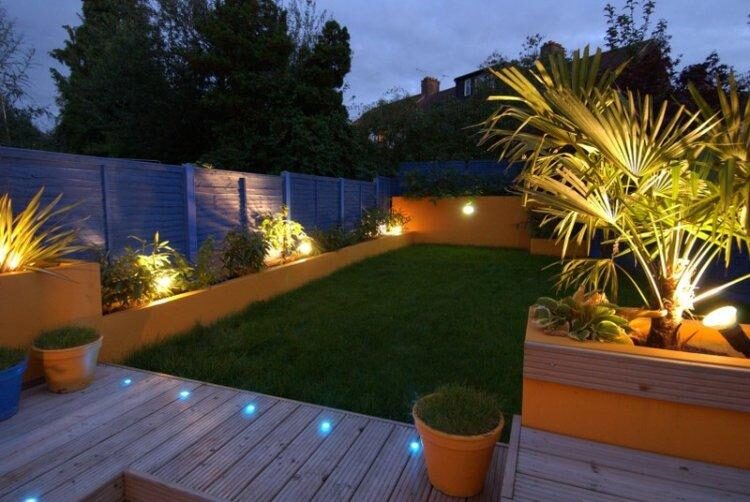
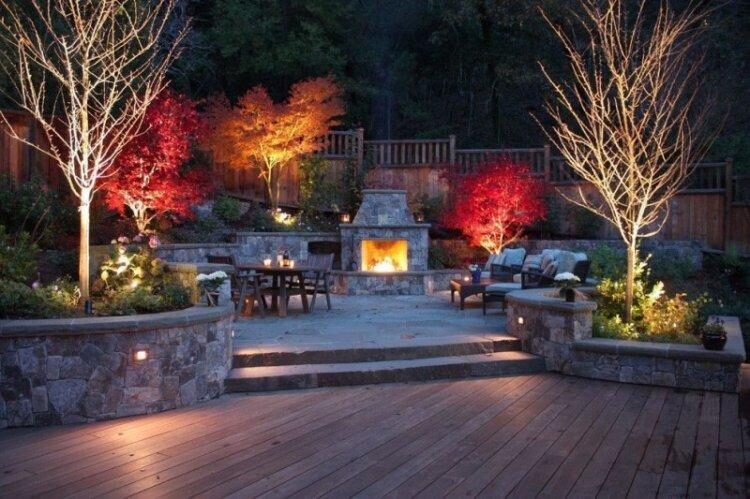
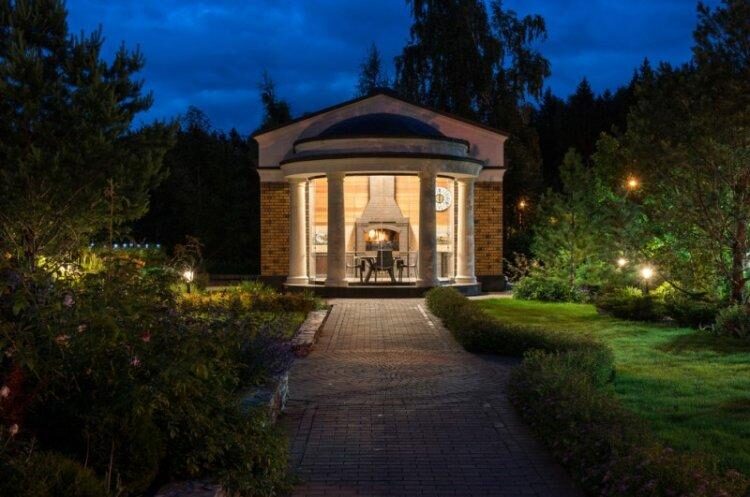
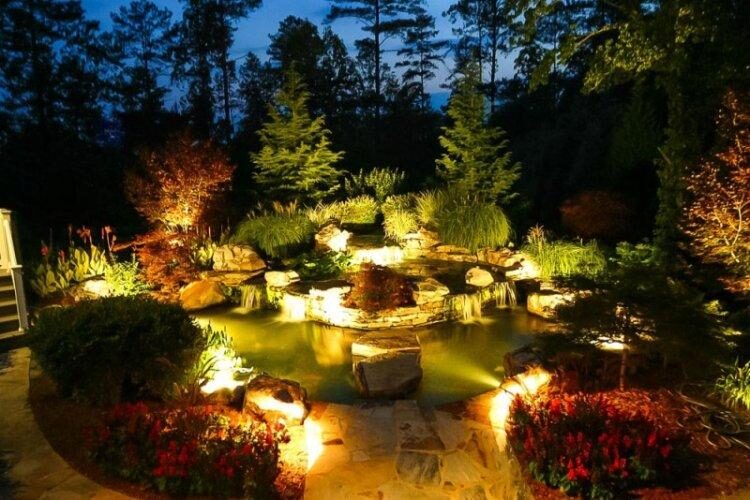
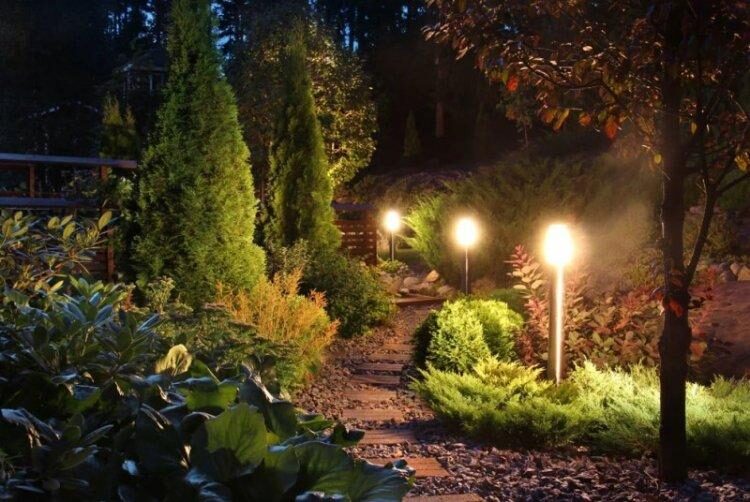
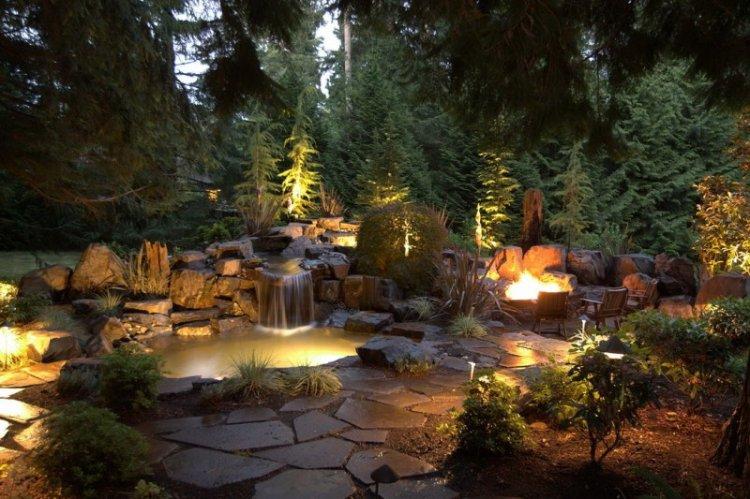

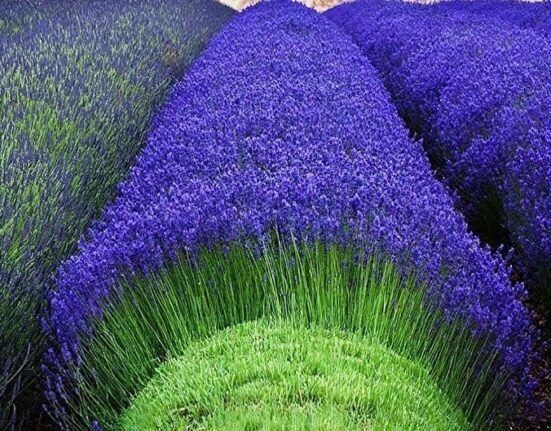

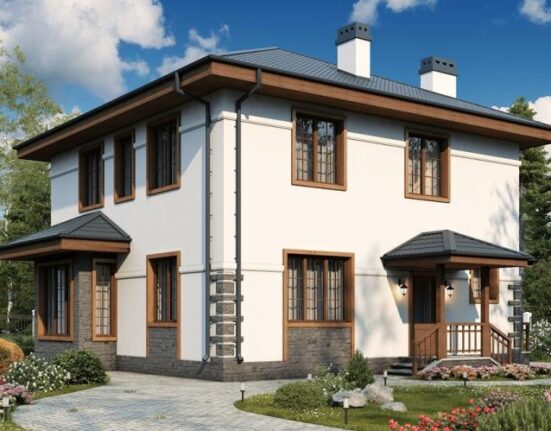

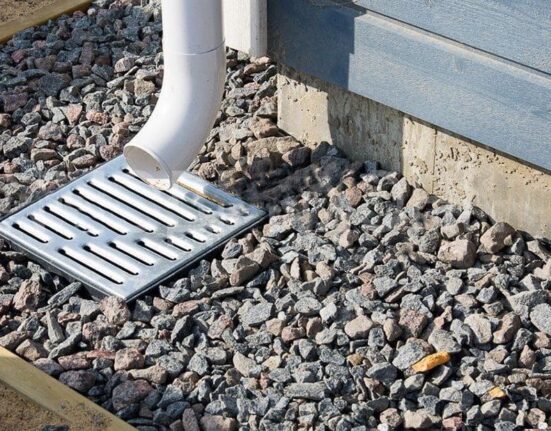
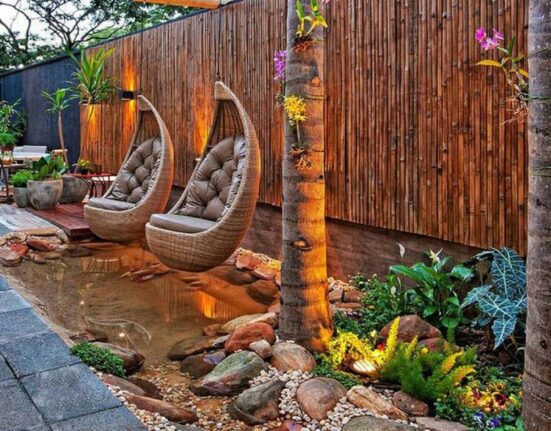
Leave feedback about this